Cell Division - Mitosis and Meiosis
1/68
There's no tags or description
Looks like no tags are added yet.
Name | Mastery | Learn | Test | Matching | Spaced |
|---|
No study sessions yet.
69 Terms
What is the cell cycle?
The regular sequence of growth and division that cells undergo.
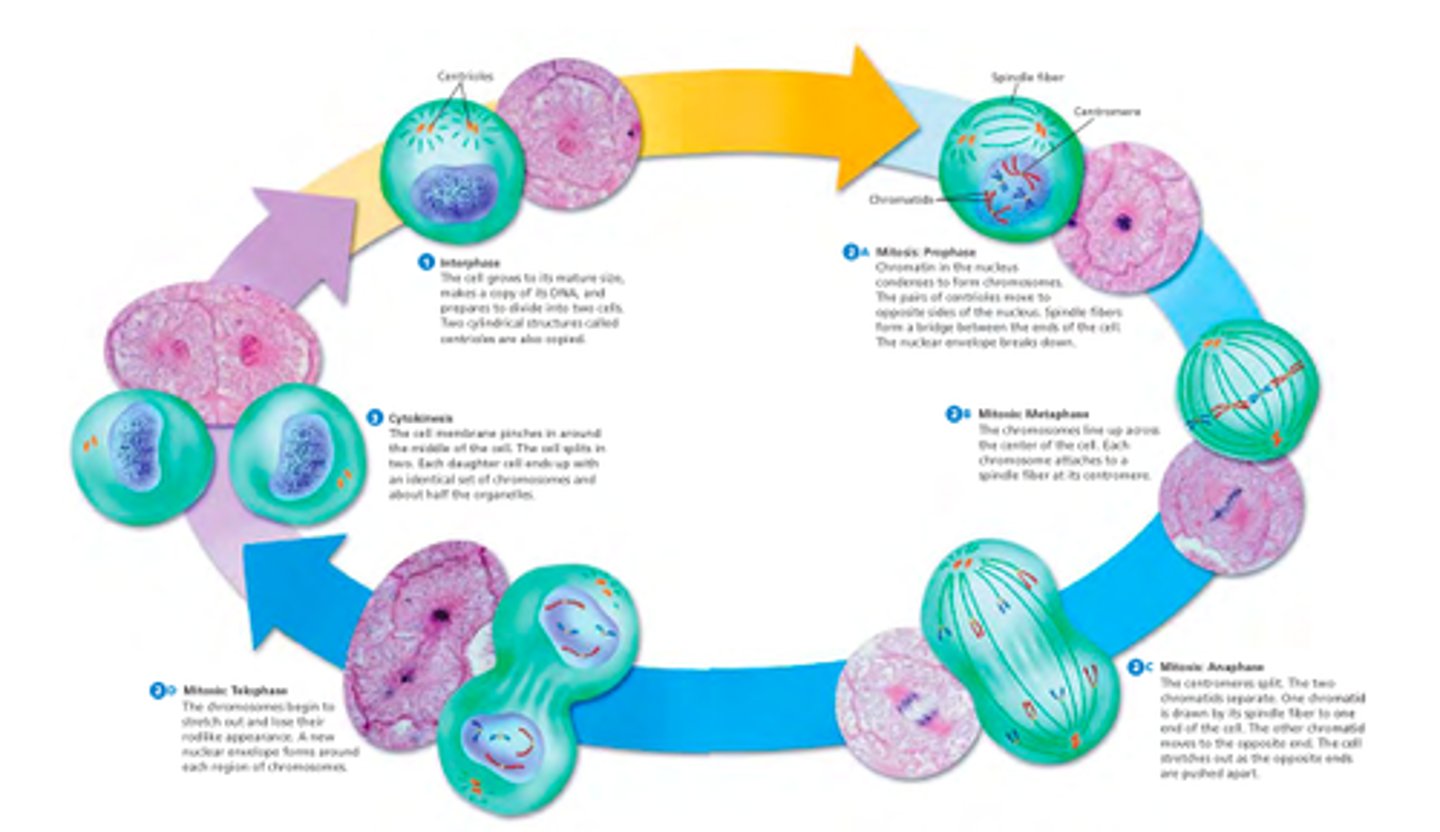
What are daughter cells?
The cells that result when a cell divides.
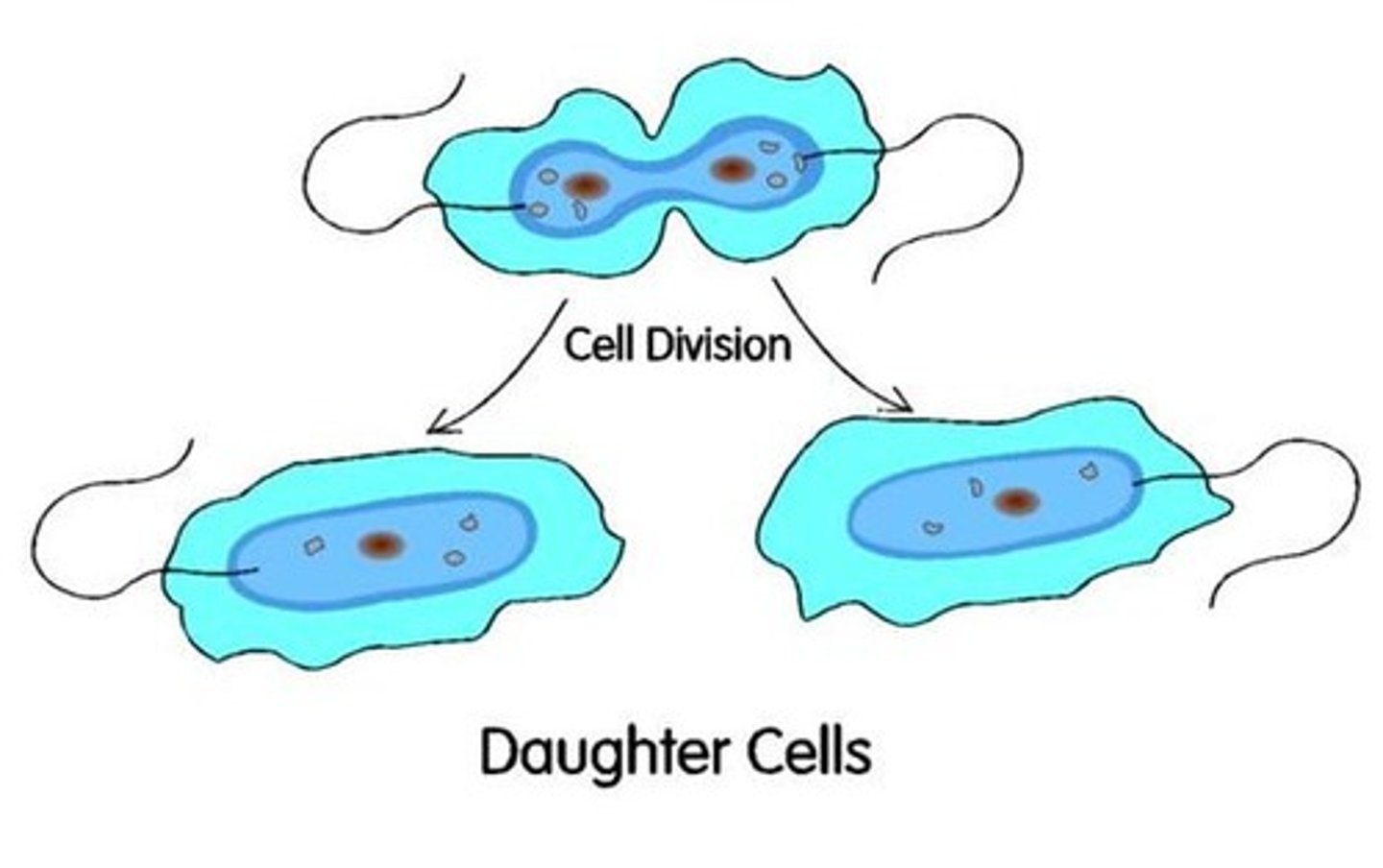
In what process does the cell make a copy of its DNA?
Replication
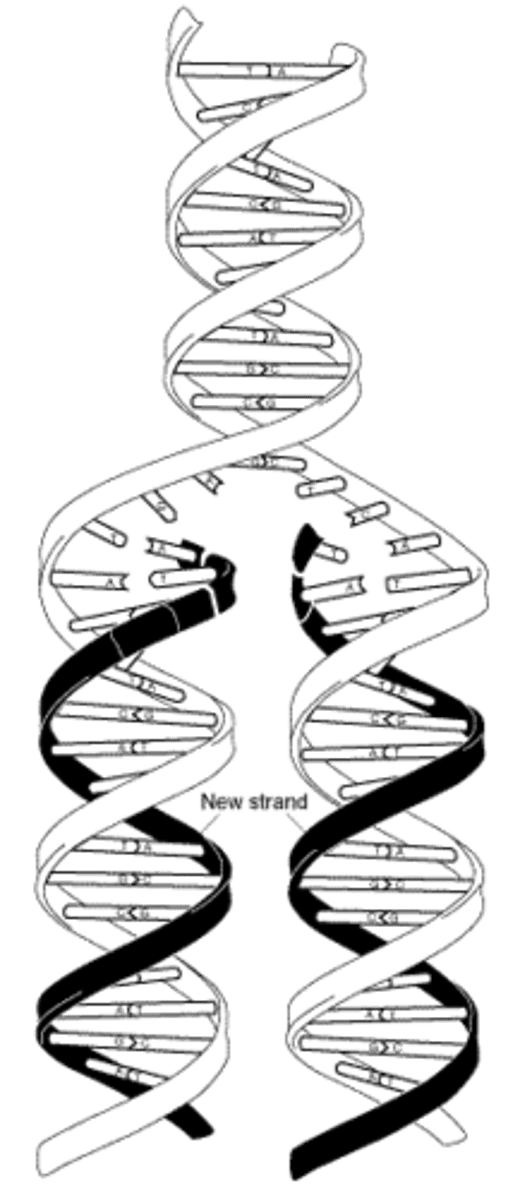
What two-rod structures contain the cell's DNA?
Chromosomes
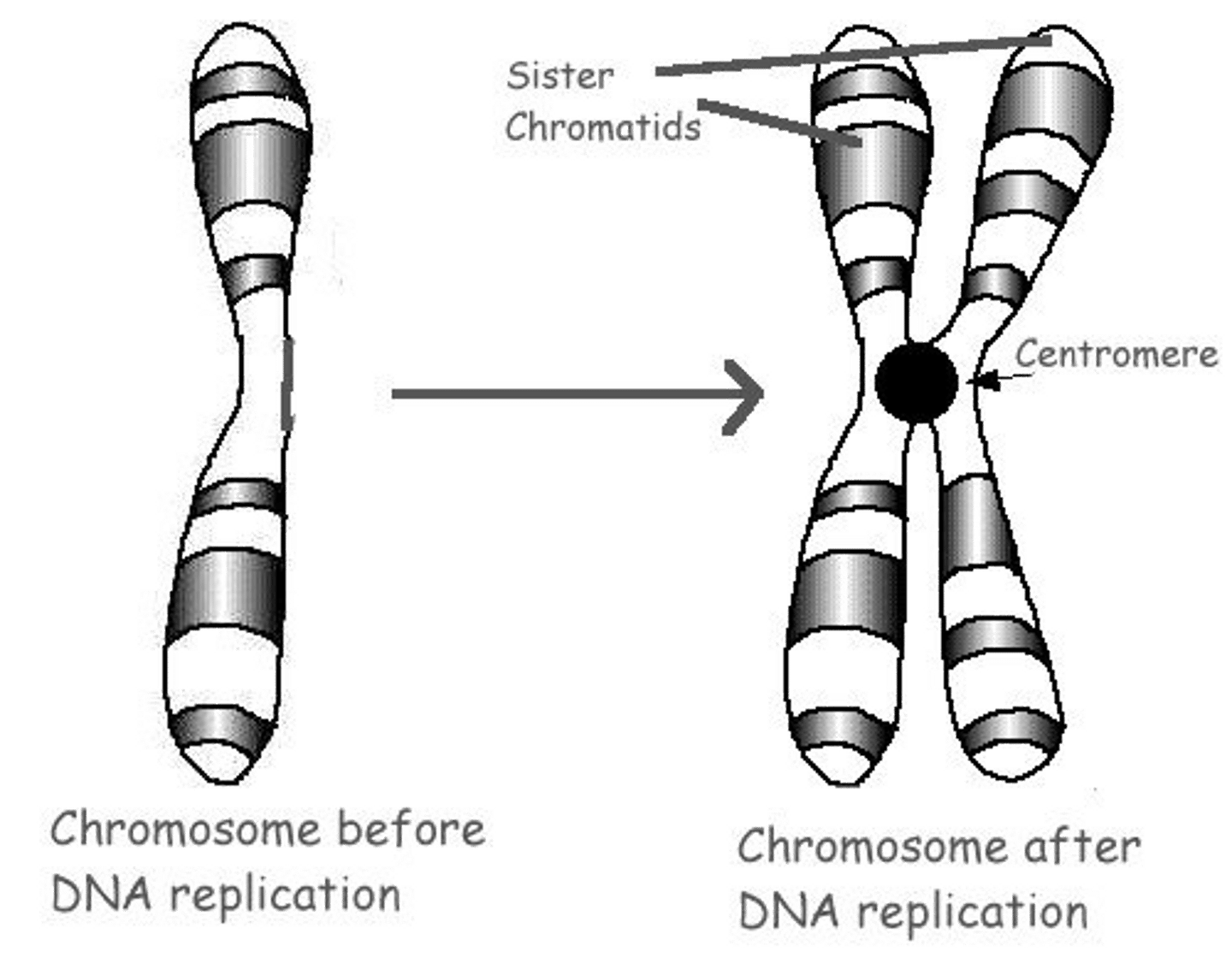
What is each rod called?
Chromatid
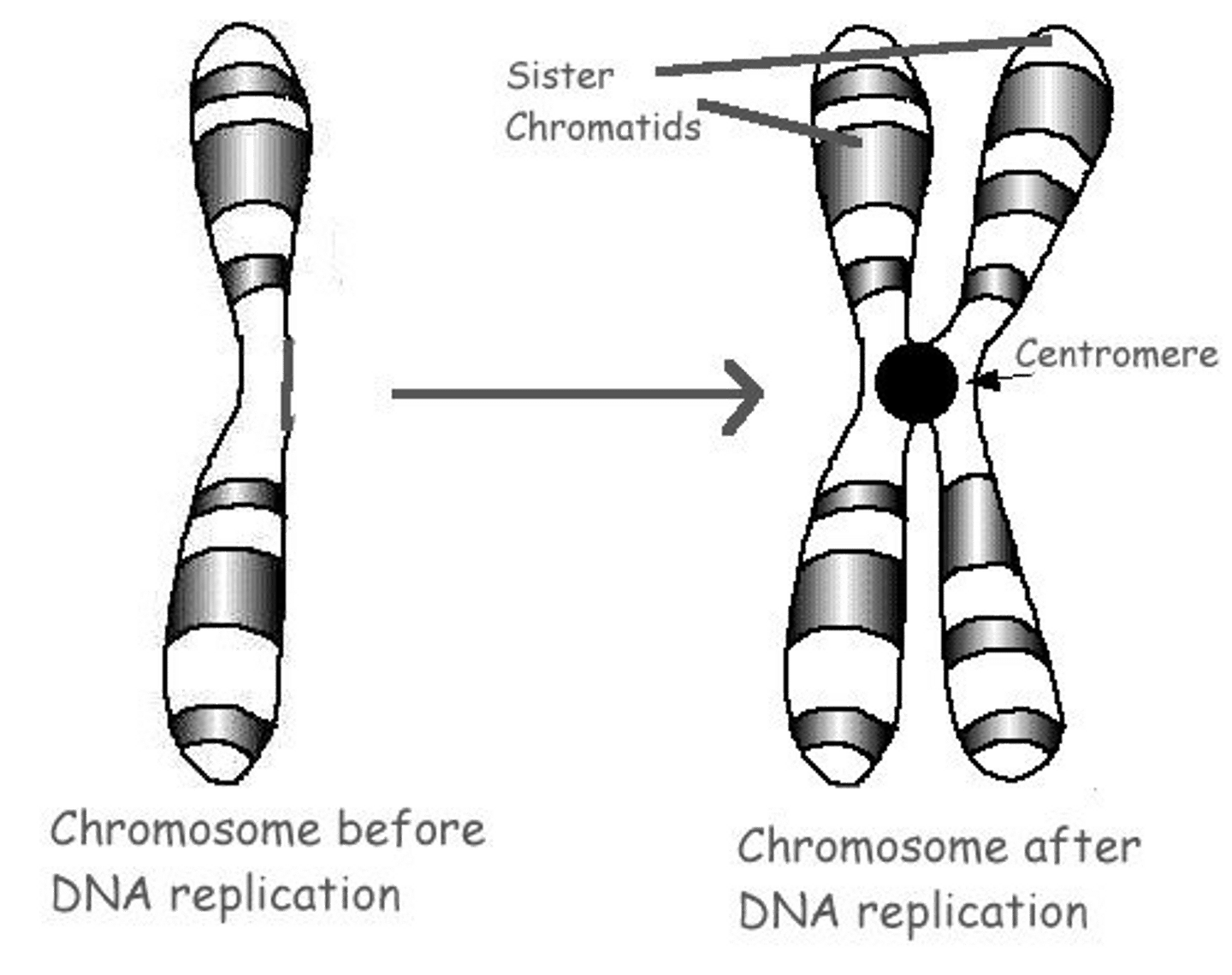
What is chromatin?
Stringy substance that consist of DNA tightly coiled around proteins before it forms into chromosomes.
What is a chromatid?
One of two identical "sister" parts of copied chromosomes.
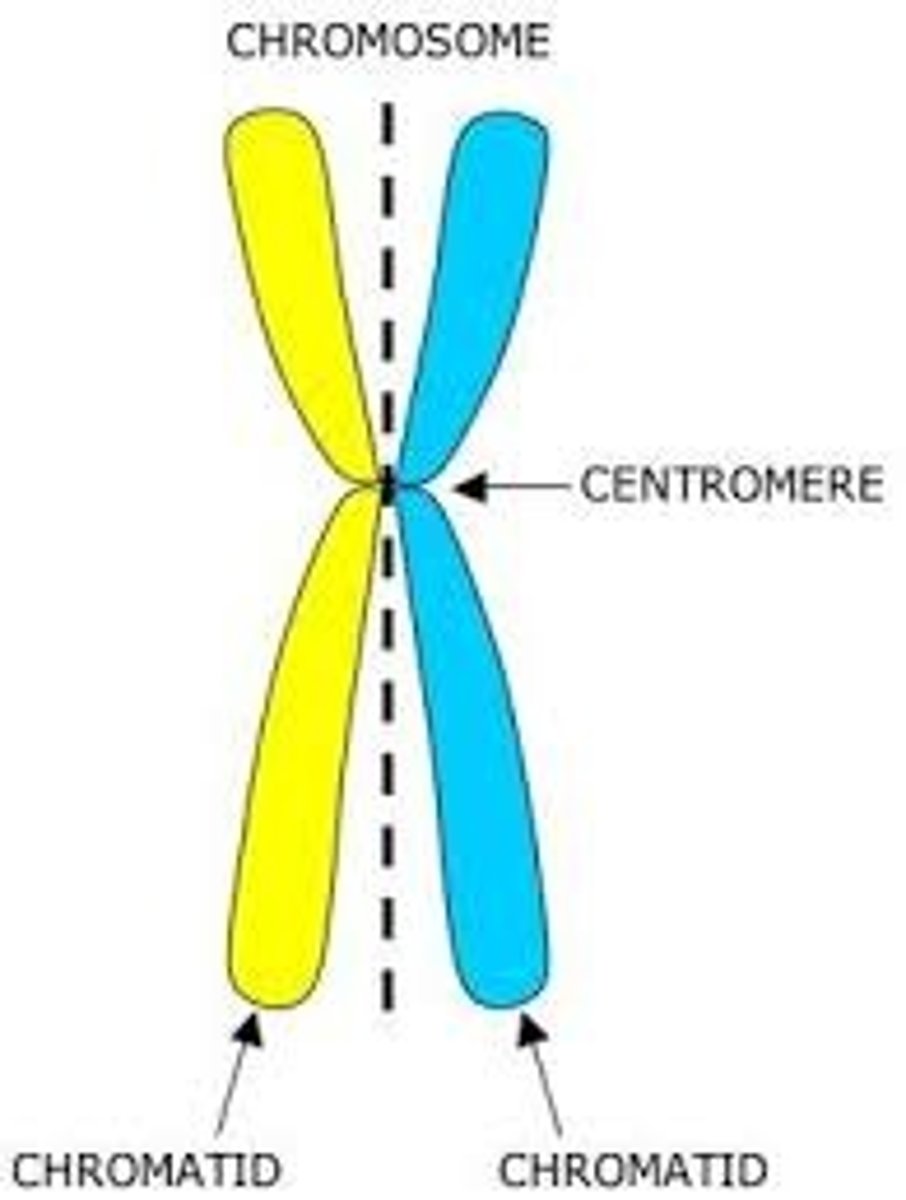
What is a centromere?
The structure that holds the two chromatids together.
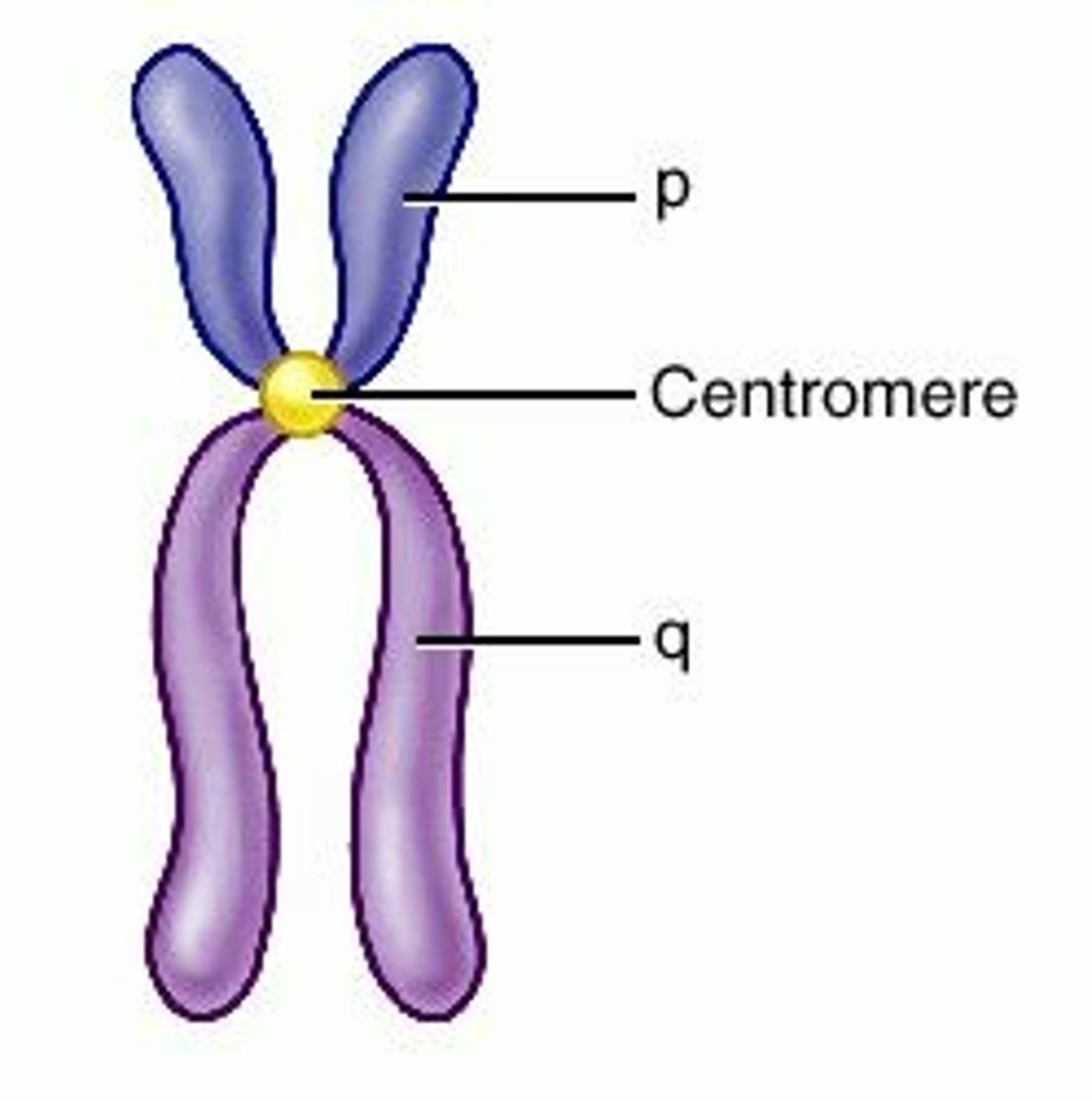
What is a centriole?
Centrioles have spindle fibers attached to them.
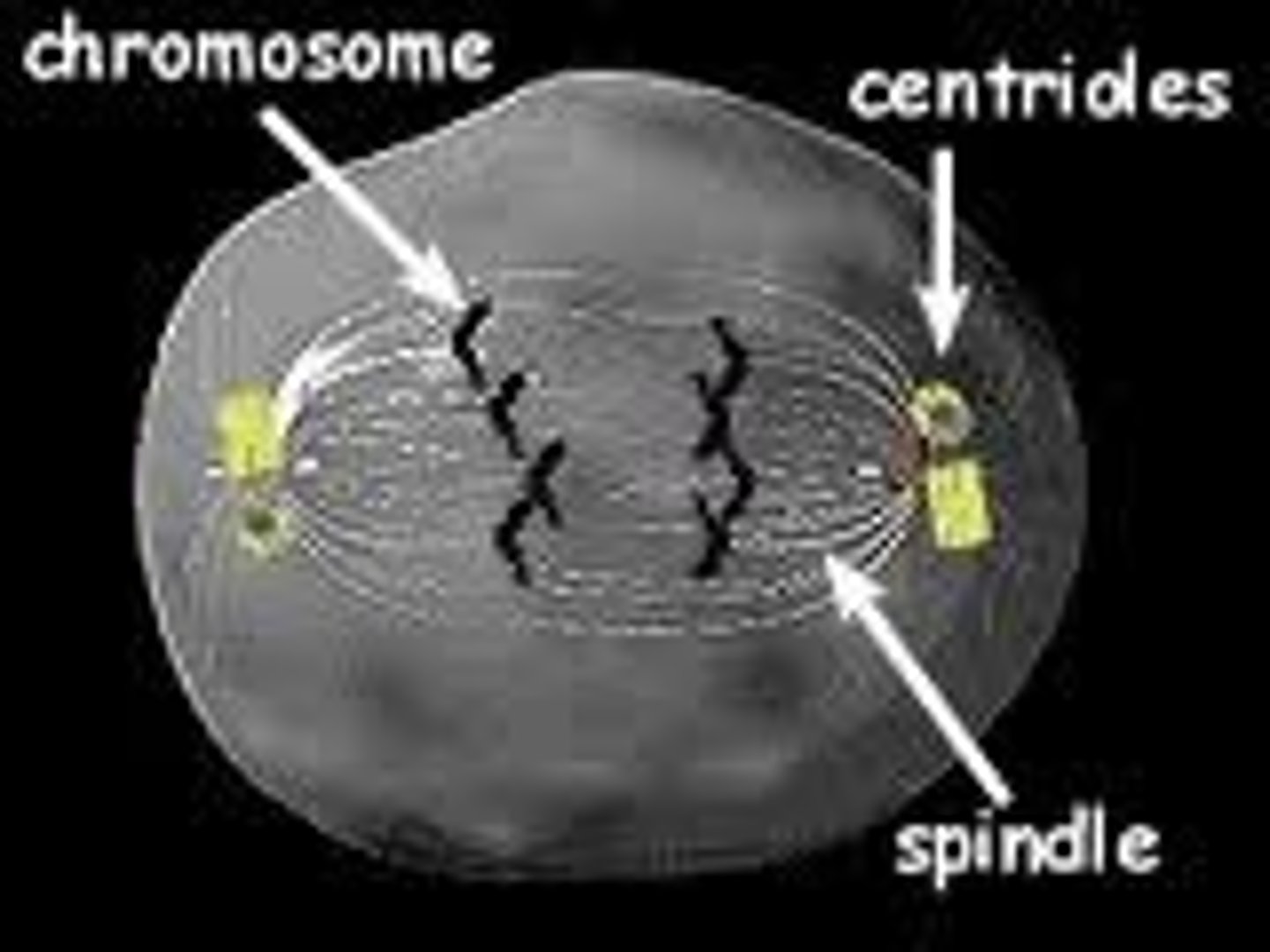
Closer image of a centriole.

What is Mitosis?
Asexual reproduction (cell division) of a body cell where one copy of DNA is distributed into each of the two daughter cells.
Daughter cells are identical to the parent cell.
Purpose: To repair or replace body cells.
Mitosis only occurs in eukaryotic cells.
One continuous process. After Telophase, the division cycle starts again with Interphase.
What are the stages of Mitosis?
Interphase
Prophase
Metaphase
Anaphase
Telophase
What happens during Interphase?
The cell grows, replicates its DNA, and prepares to begin mitosis.
What happens during Prophase?
Chromatin forms into chromosomes.
Centrioles move to opposite sides and send out
spindle fibers.
Nuclear membrane (envelope) breaks down.
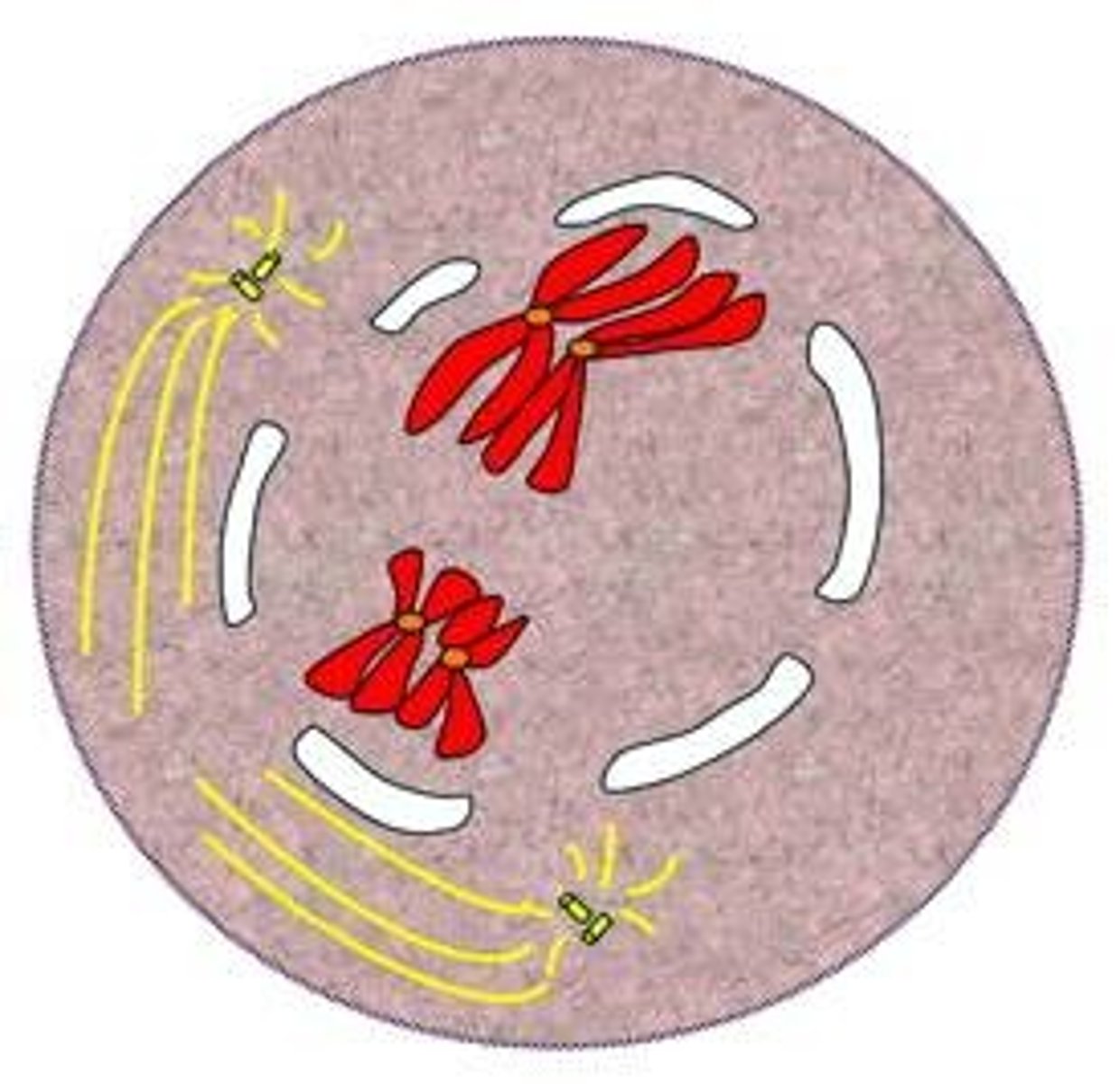
What happens during Metaphase?
Each spindle fiber attaches to a chromatid pair at its centromere to line them up across the MIDDLE of the cell.
MIDDLE = METAPHASE
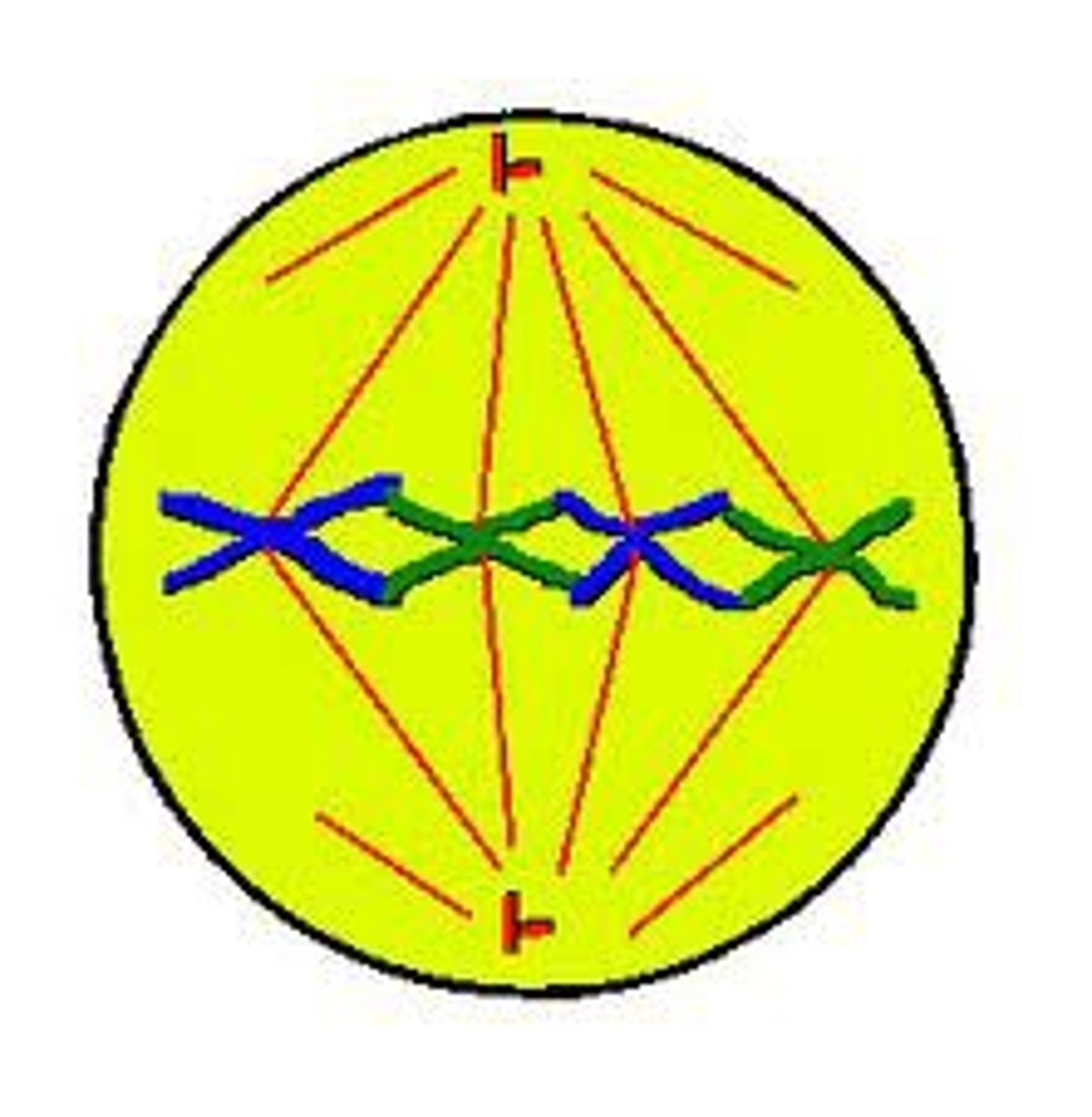
What happens during Anaphase?
The spindle fibers SPLIT APART the sister chromatids and move them to opposite ends of the cell, equally dividing the genetic material.
APART = ANAPHASE
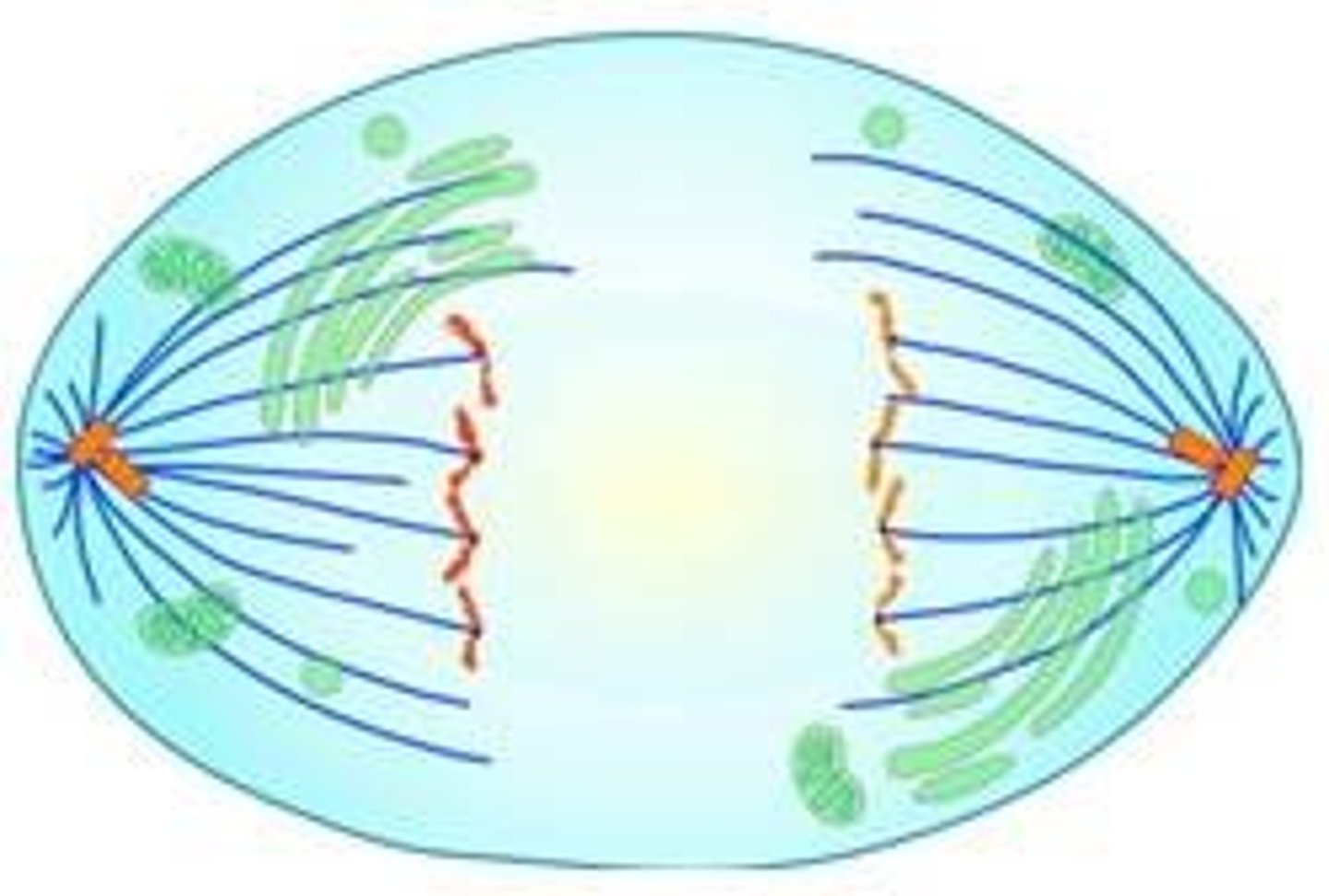
What happens during Telophase?
A nucleolus forms in each side.
A new nuclear membrane forms around each new set of chromosomes, each with the same number of chromosomes as the original cell.
Cytokinesis finishes the process by splitting the cell in 2.
The division cycle begins again with Interphase
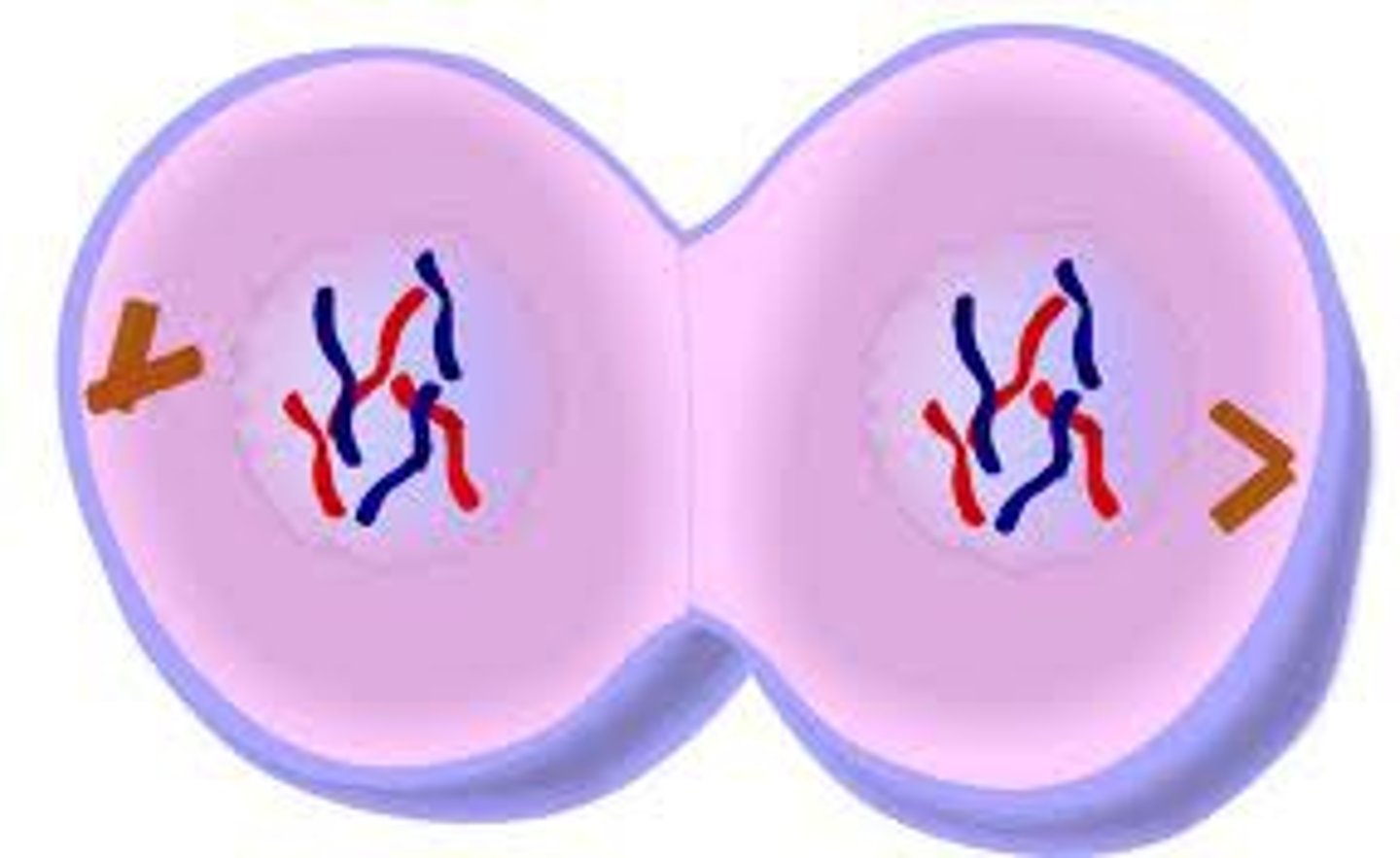
What happens during cytokinesis?
The cytoplasm divides, distributing the organelles into each of the two new cells.
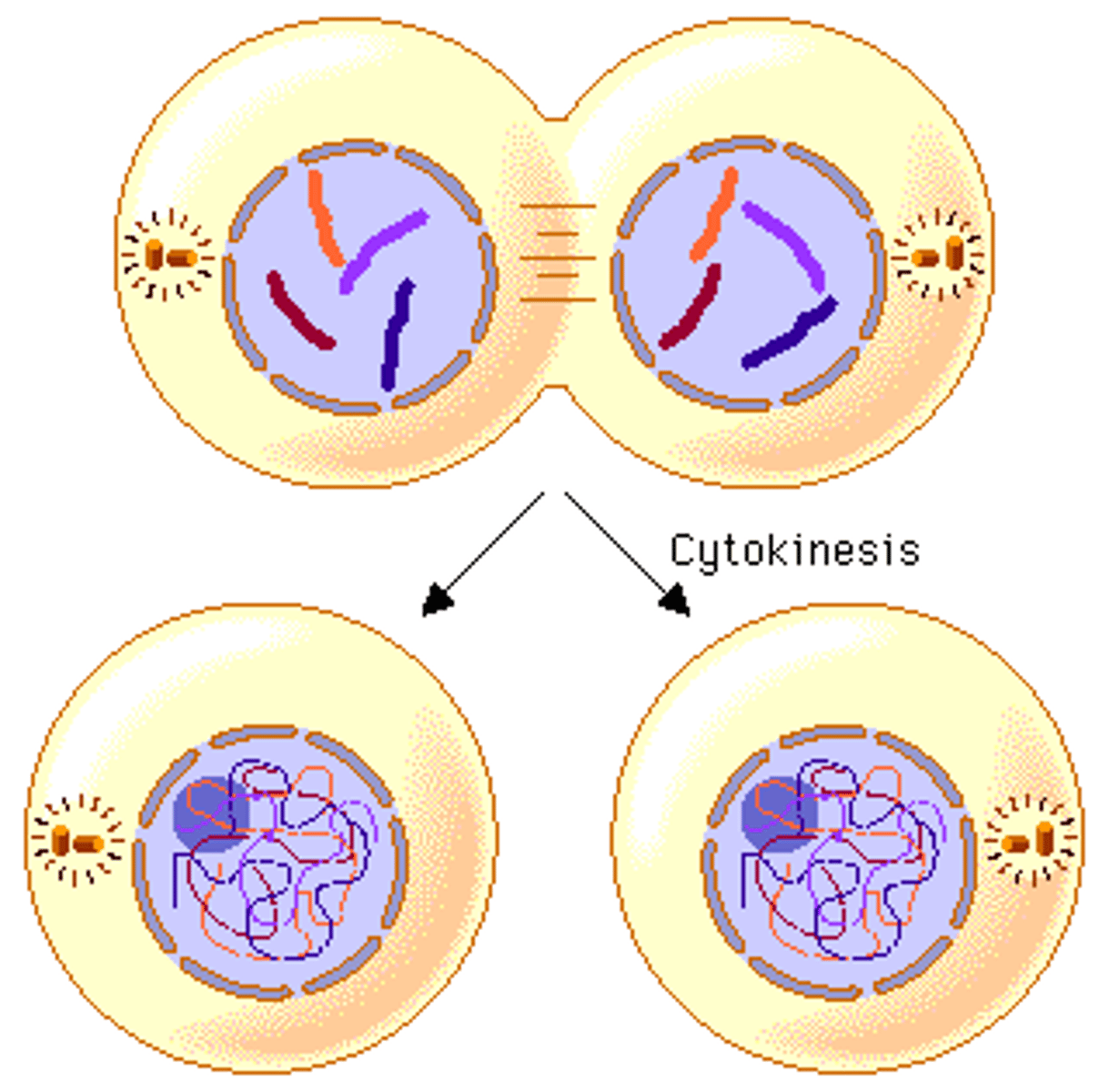
What happens during cytokinesis of animal cells?
Cytokinesis finishes the division process. The cell membrane squeezes together around the middle of the cell until the cell is pinched in two, splitting the cell in two and dividing the cytoplasm, organelles, and other material contained within the cell.
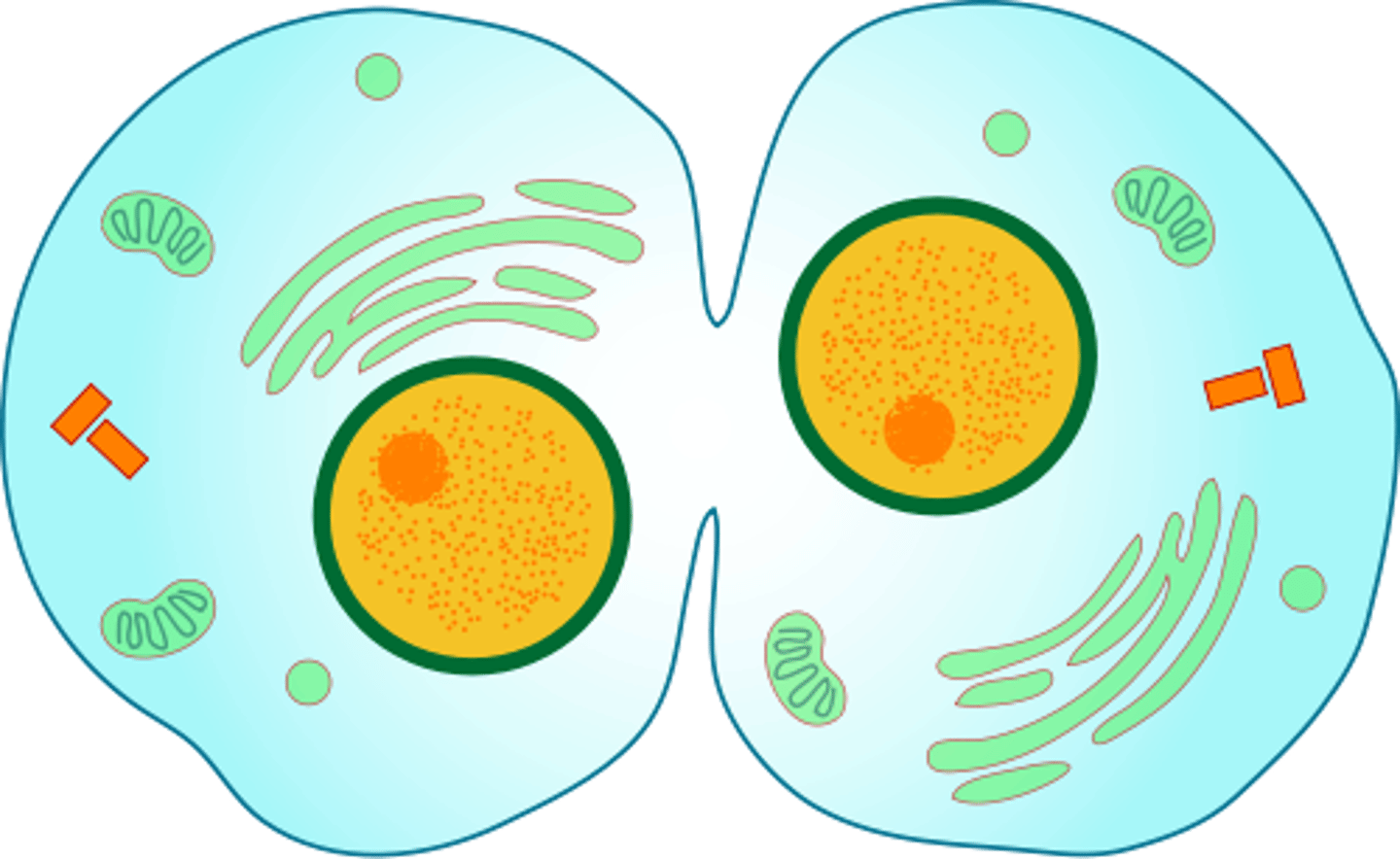
What happens during cytokinesis of plant cells?
A cell plate forms across the middle of the cell and gradually develops into new cell membranes, and new cell walls form around the cell membranes.
Because of the rigid cell wall, the cell membrane cannot be pinched inward like cytokinesis happens in animal cells.
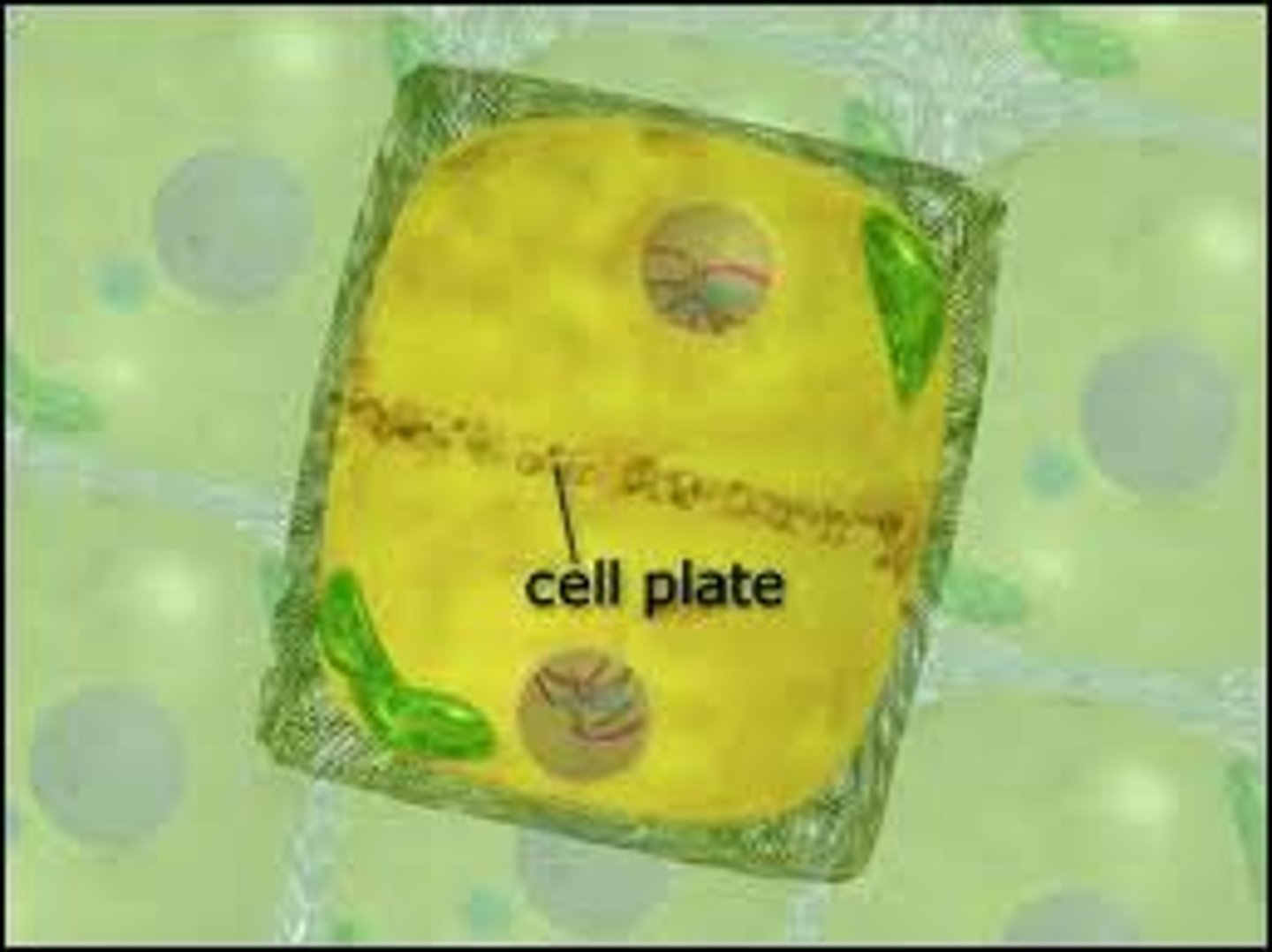
What is meiosis?
Only for sexual reproduction.
Stages of gamete cell reproduction.
What are the stages of meiosis?
Interphase I
Prophase I
Metaphase I
Anaphase I
Telophase I
Prophase II
Metaphase II
Anaphase II
Telophase II
Interphase
This happens before mitosis or meiosis. The cell grows, replicates its DNA, and prepares to begin mitosis or meiosis.
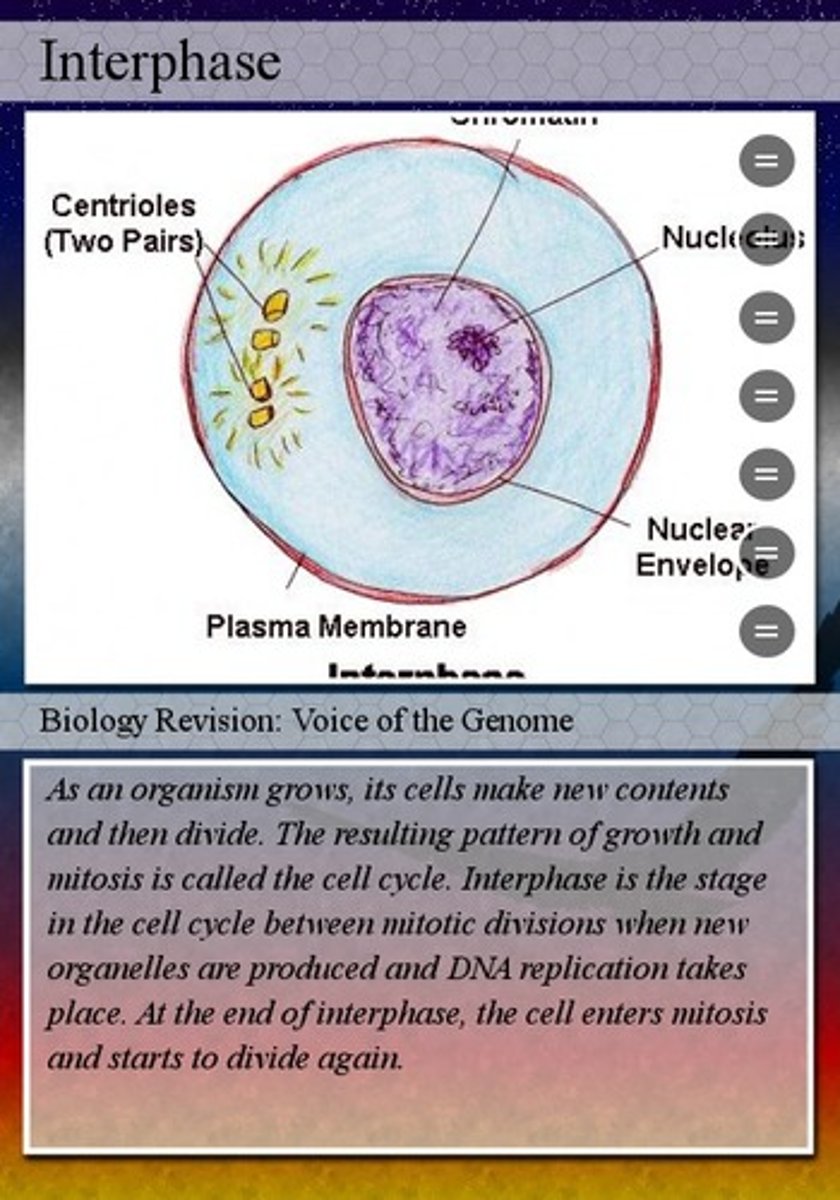
Prophase I
1. Chromosomes condense.
2. Sister chromatids pair up.
3. Crossing over occurs.
4. New combos of alleles are formed.
5. Spindle fibers form at opposite ends of the cell.
6. Nuclear membrane disappears.
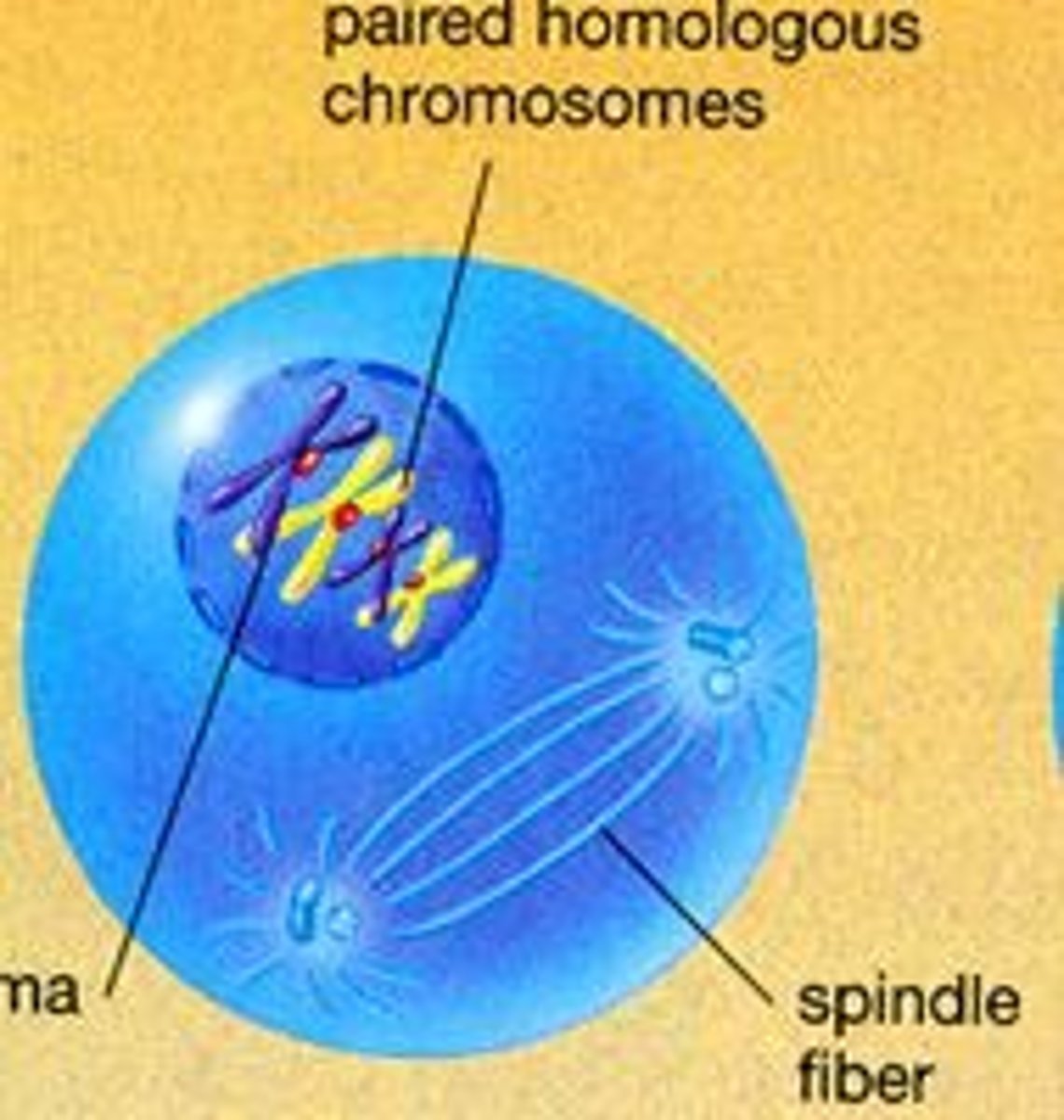
Metaphase I
Homologous chromosomes line up at the center of the cell.
(Metaphase=They MEET in the MIDDLE)
Spindle fibers from one end of the cell attach to the homologous chromosomes, and spindle fibers from the other end attach to the chromatid pairs.
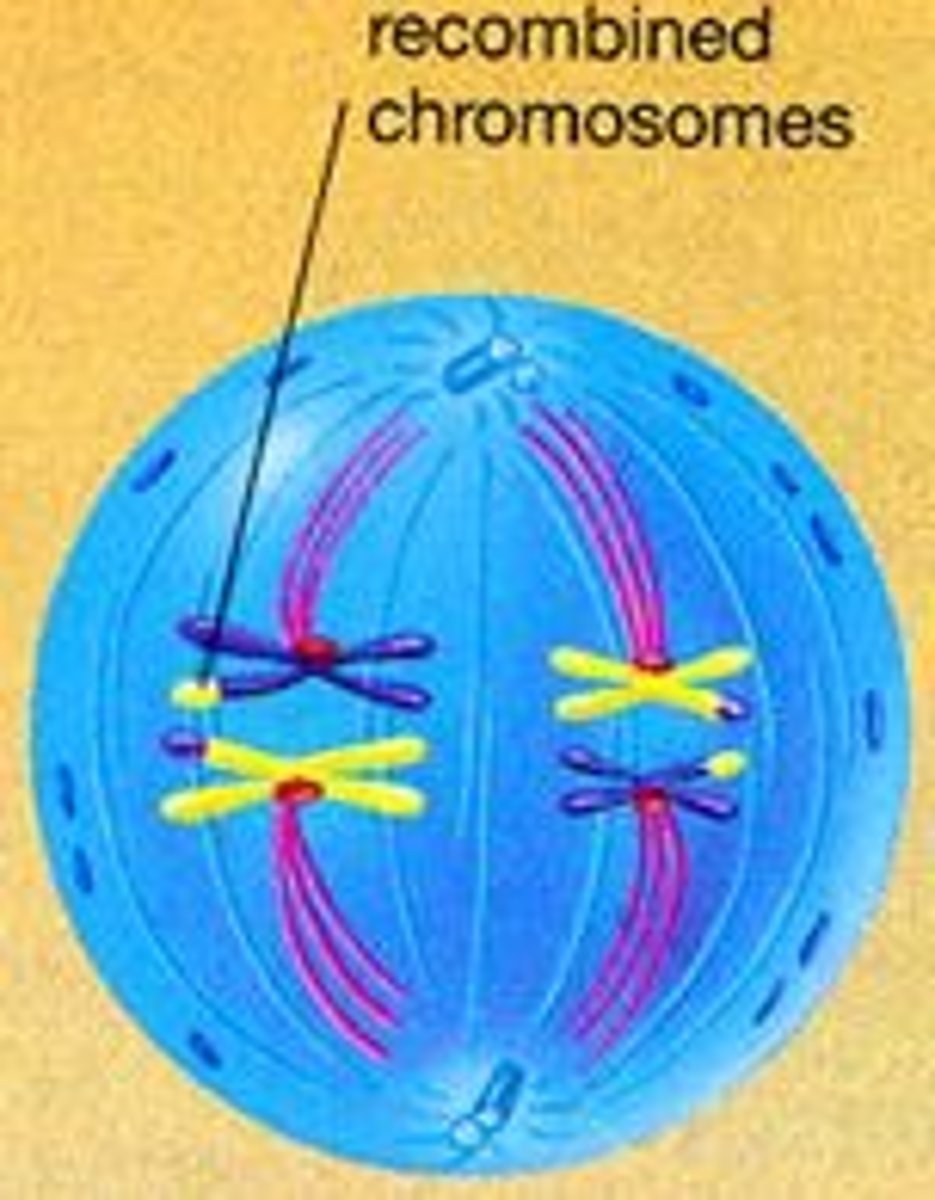
Anaphase I
Homologous chromosomes separate and MOVE APART to opposite sides of the cell.
The sister chromatids remain attached at their centromeres. This is different than in mitosis.
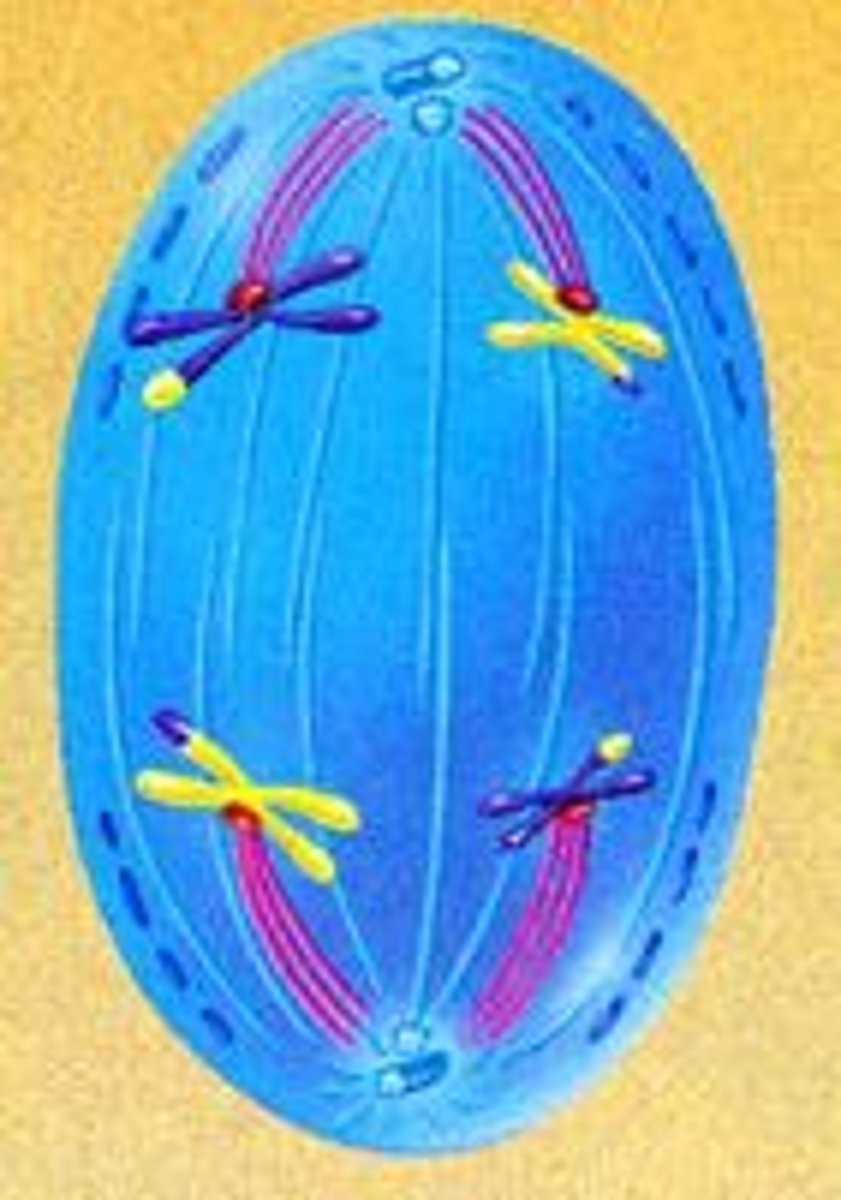
Telophase I
Each side has a set of haploid set of chromosomes.
Each chromosome still has 2 chromatids.
Nuclear membrane forms around the 2 daughter cells.
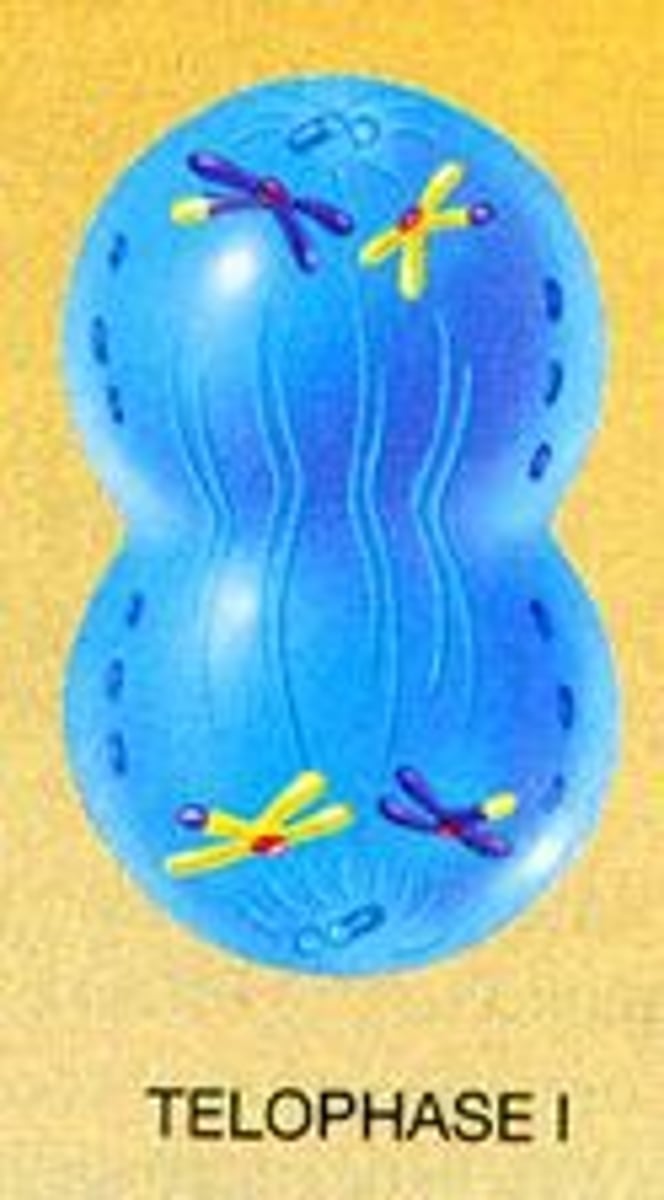
Cytokinesis in Meiosis
The cell splits into 2 daughter cells with 2 chromatids in each. The chromosomes are different from each other and from the parent diploid cell because of the crossing over that occurred in Prophase I.
Prophase II
Nuclear membrane breaks down.
New spindle fibers form
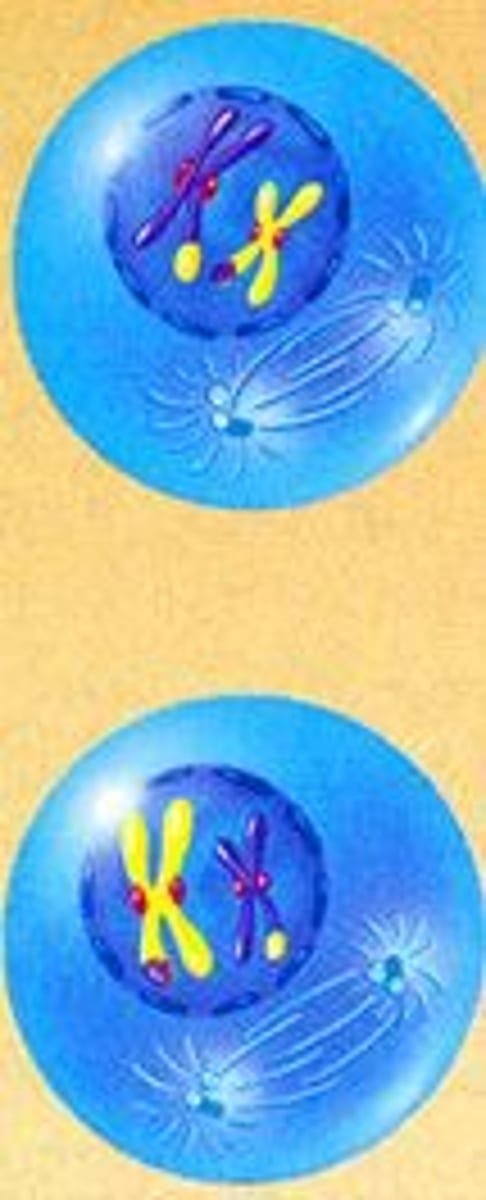
Metaphase II
Chromosomes line up at the MIDDLE of the cell.
Spindle fibers attach to centromeres.
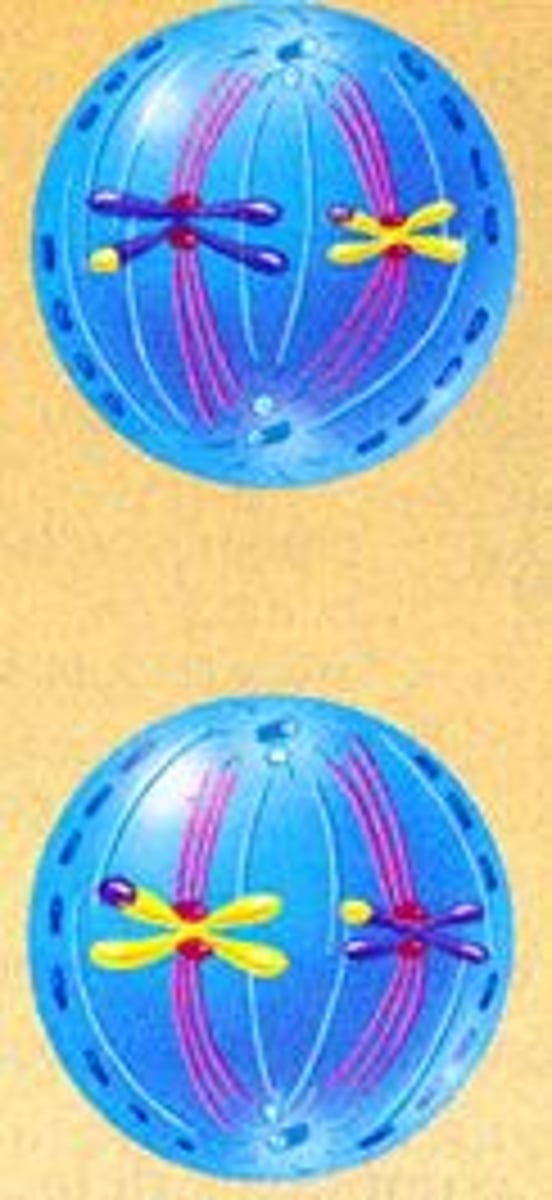
Anaphase II
Centromeres separate and the spindle fibers contract and pull sister chromatids apart to opposite ends of the cell.

Telophase II
A nuclear membrane forms around each haploid set of chromosomes.
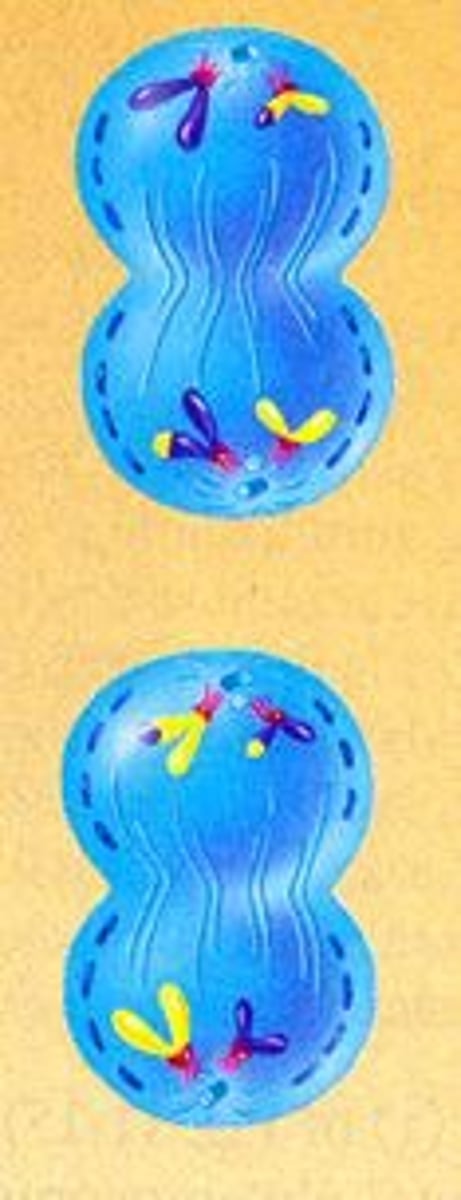
cytokinesis
The cells divide forming into haploid gametes, 4 sperm or 1 egg cell. (Remember, 3 egg cells die off.)
So 4 haploid daughter cells formed from the original diploid cell when it entered Meiosis.
1 diploid cell → Meiosis → 4 haploid daughter cells (gametes)
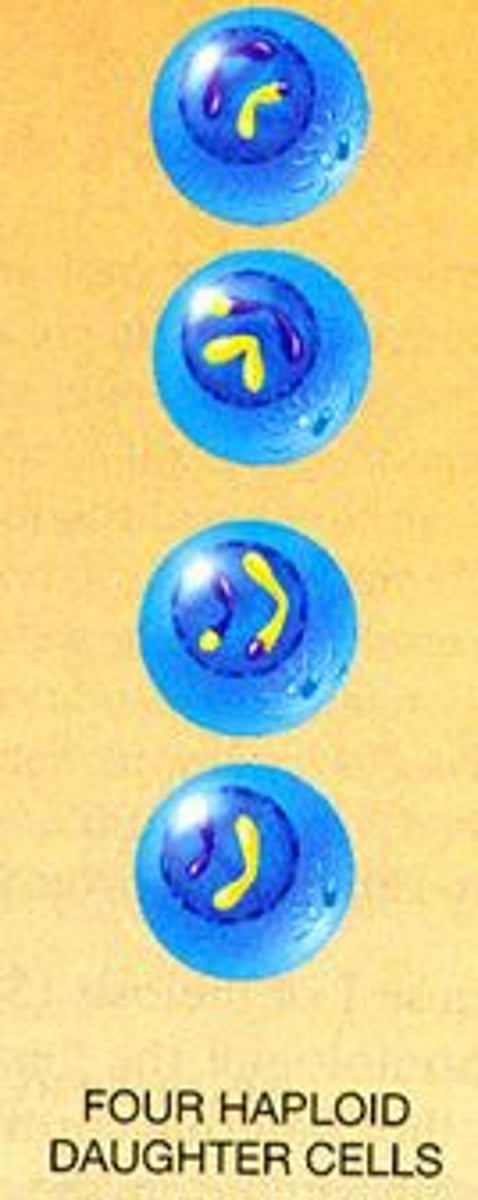
What is cytokinesis?
Cytokinesis finishes the division process by splitting the cell in two and dividing the cytoplasm, organelles, and other material contained within the cell. Cytokinesis differs in plant and animal cells.
What does DNA stand for?
Deoxyribonucleic acid
What happens in DNA replication?
The two strands in one molecule separate, and then new nitrogen bases pair up with each strand to form two molecules of DNA.

Name the four nitrogen bases in DNA.
Adenine, Thymine, Cytosine, & Guanine
Name the nitrogen base pairs.
Adenine always pairs with Thymine.
Cytosine always pairs with Guanine
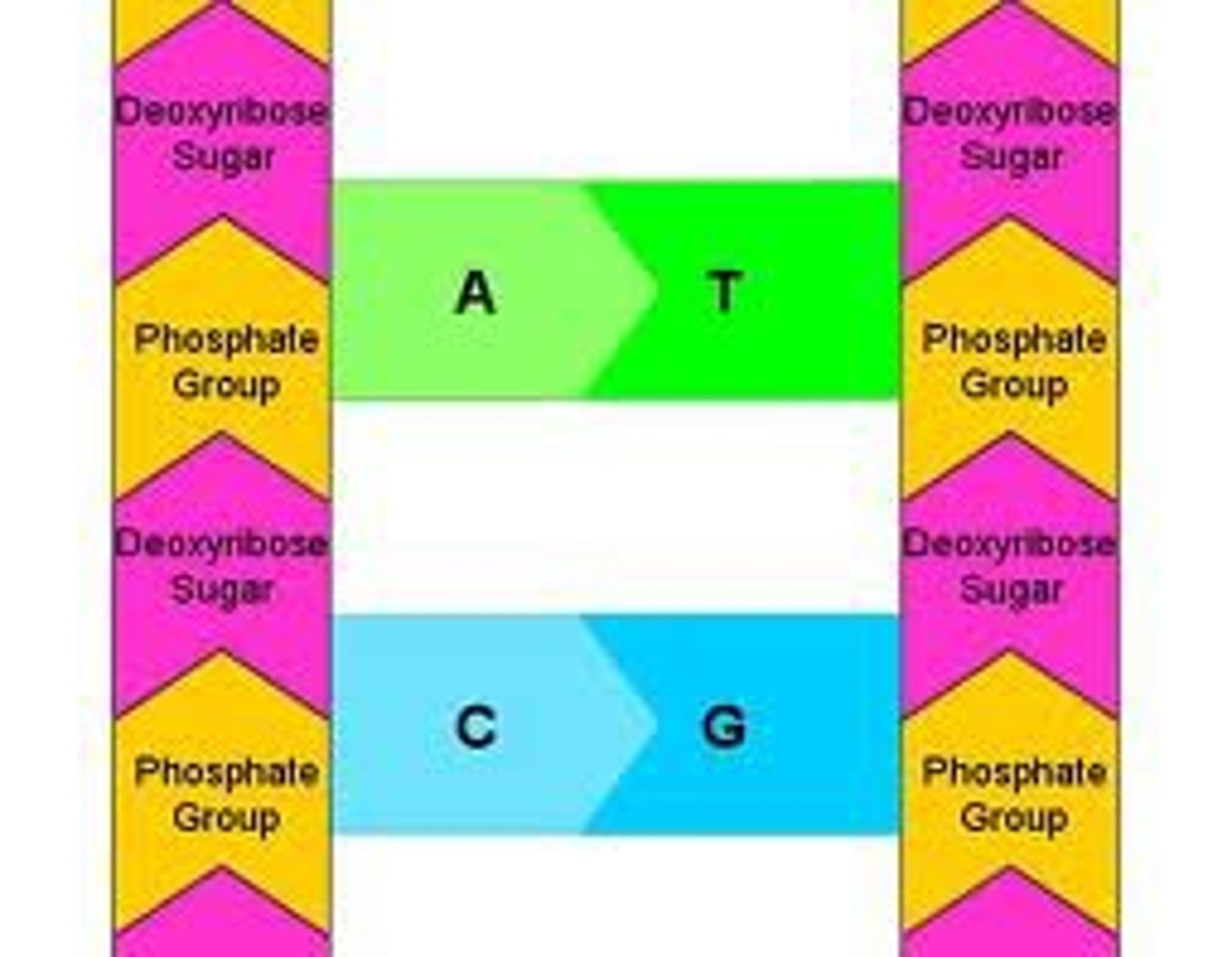
What is the shape of a DNA molecule?
A twisted ladder called a Double Helix.
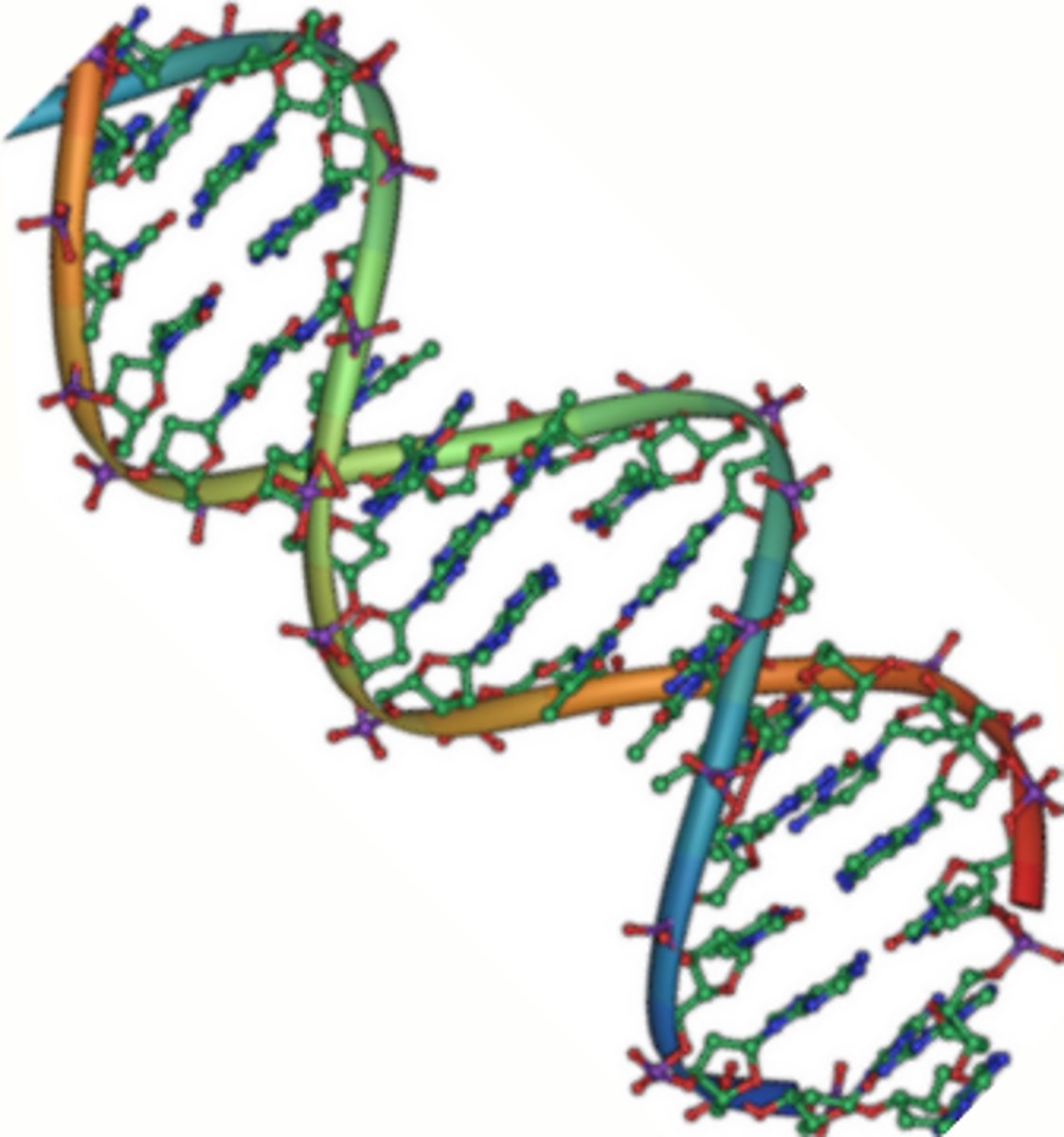
Mitosis or Meiosis?
The process of nuclear division in cells during which the number of chromosomes per cell is reduced by half through the separation of homologous chromosomes. Sexual reproduction.
Meiosis
Mitosis or Meiosis?
A process of nuclear division in eukaryotic cells during which the nucleus of a cell divides into two nuclei, each with the same number of chromosomes.
Mitosis
Mitosis or Meiosis?
DNA replication, forming sister chromatids occurs during interphase before nuclear division begins.
Mitosis and Meiosis
Mitosis or Meiosis?
One division cycle of prophase, metaphase, anaphase, telophase, and cytokinesis.
Mitosis
Mitosis or Meiosis?
Two division cycles each consisting of prophase, metaphase, anaphase, telophase, and cytokinesis.
Meiosis
Mitosis or Meiosis?
Two diploid cells, genetically identical to the parent cell.
Mitosis
Mitosis or Meiosis?
Four haploid cells containing 1/2 the amount of chromosomes as the original parent cell.
Meiosis
Mitosis or Meiosis?
Production of diploid cells for growth and repair.
Mitosis
Mitosis or Meiosis?
Crossing over where DNA is exchanged.
Meiosis
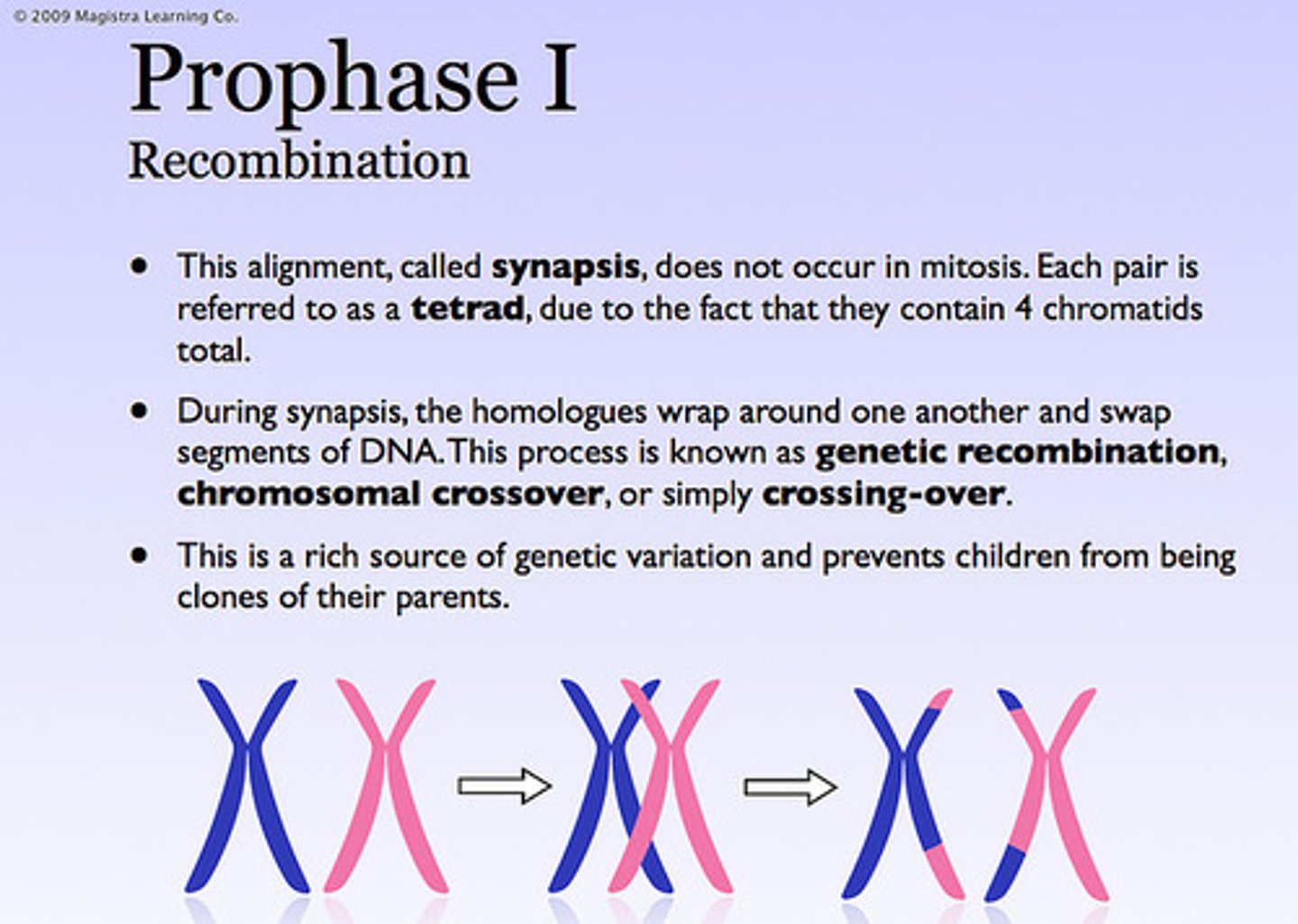
Mitosis or Meiosis?
Production of haploid gamete cells for sexual reproduction.
Meiosis
Mitosis or Meiosis?
Divides the nucleus 1 time, resulting in 2 daughter cells.
Mitosis
Mitosis or Meiosis?
Divides the nucleus twice, resulting in 4 daughter cells.
Meiosis
How are mitosis and meiosis different?
Mitosis is the process of dividing body cells for growth and repair.
Daughter cells are identical to the parent cell.
(diploid cells)
Meiosis is the process of producing gametes (sperm and eggs). (haploid cells)
The 3 mechanisms for the greatest genetic variation are:
1. Crossing over where some DNA is swapped
2. Arrangement of chromosomes in metaphase
3. Random fertilization
If a person has two X chromosomes, that person would be female or male?
female
If a person has one X and one Y chromosome, that person would be female or male?
male
All gametes(ova) from a human female contain a/an _________ sex chromosome. X or Y?
X sex chromosome
50% of a human male's gametes (sperm) contain an X sex chromosome and 50% contain a Y sex chromosome.
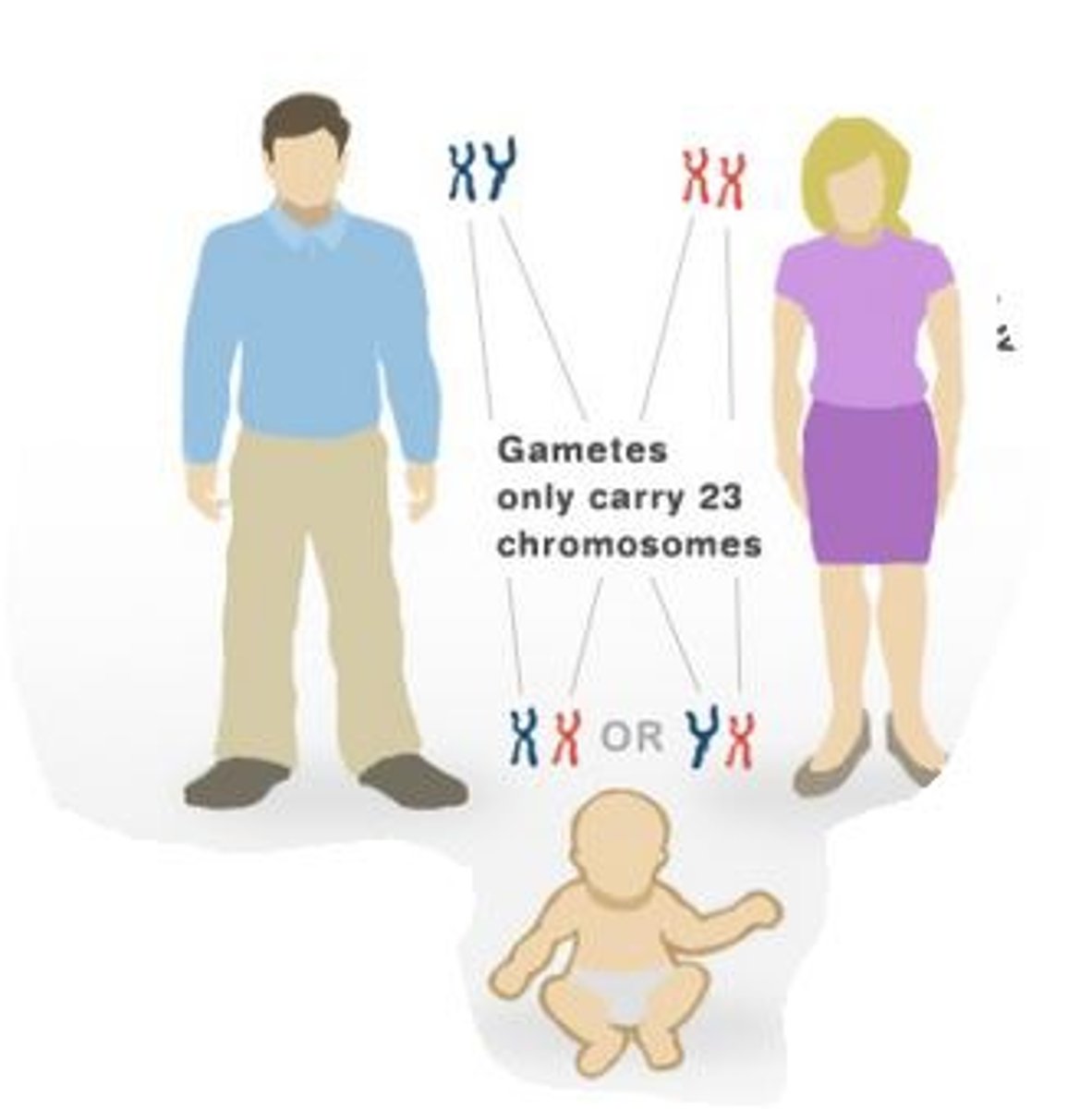
What does 46 XX represent?
A female with 46 chromosomes in a human body cell.
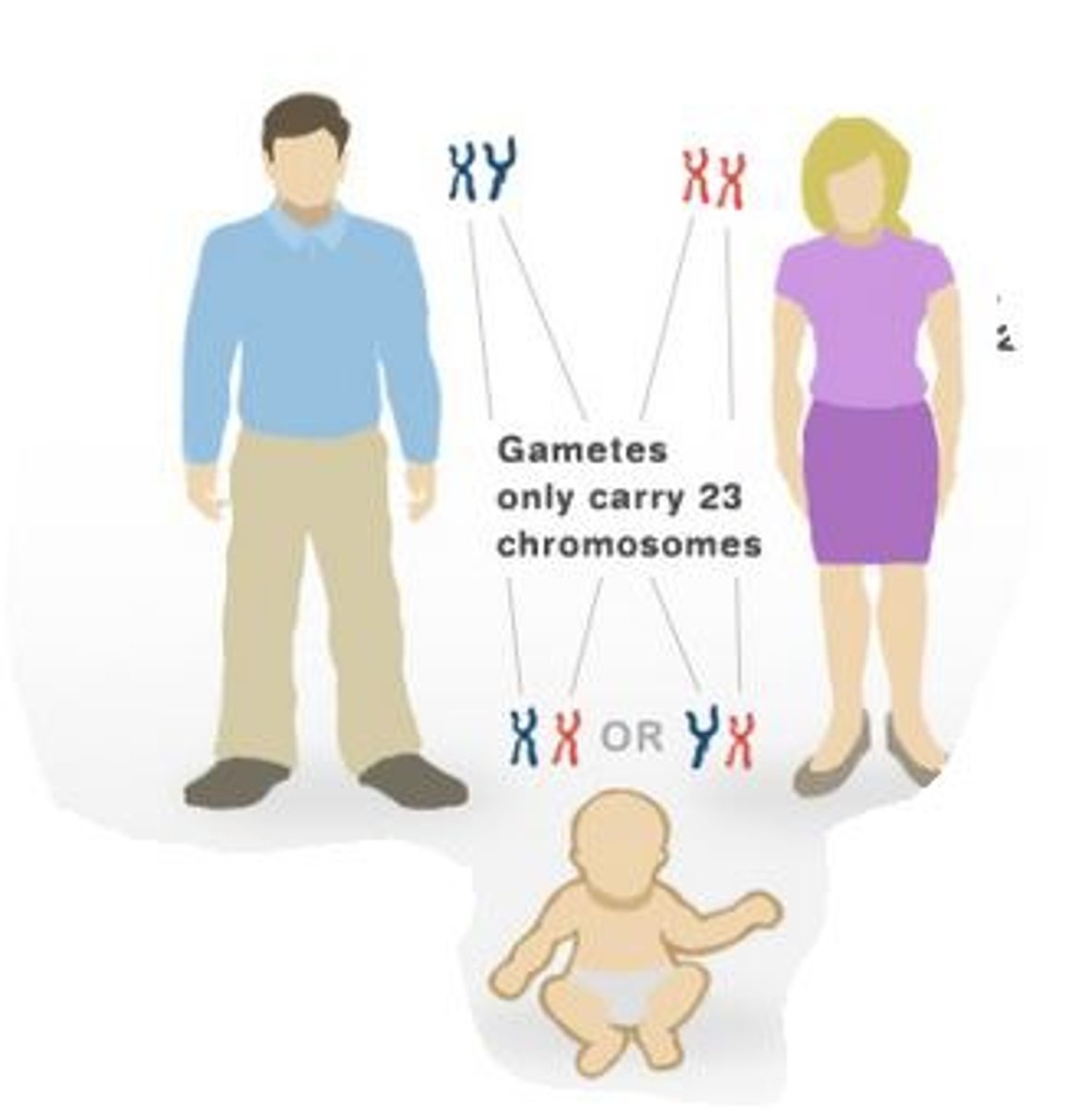
What does 46 XY represent?
A male with 46 chromosome in a human body cell.
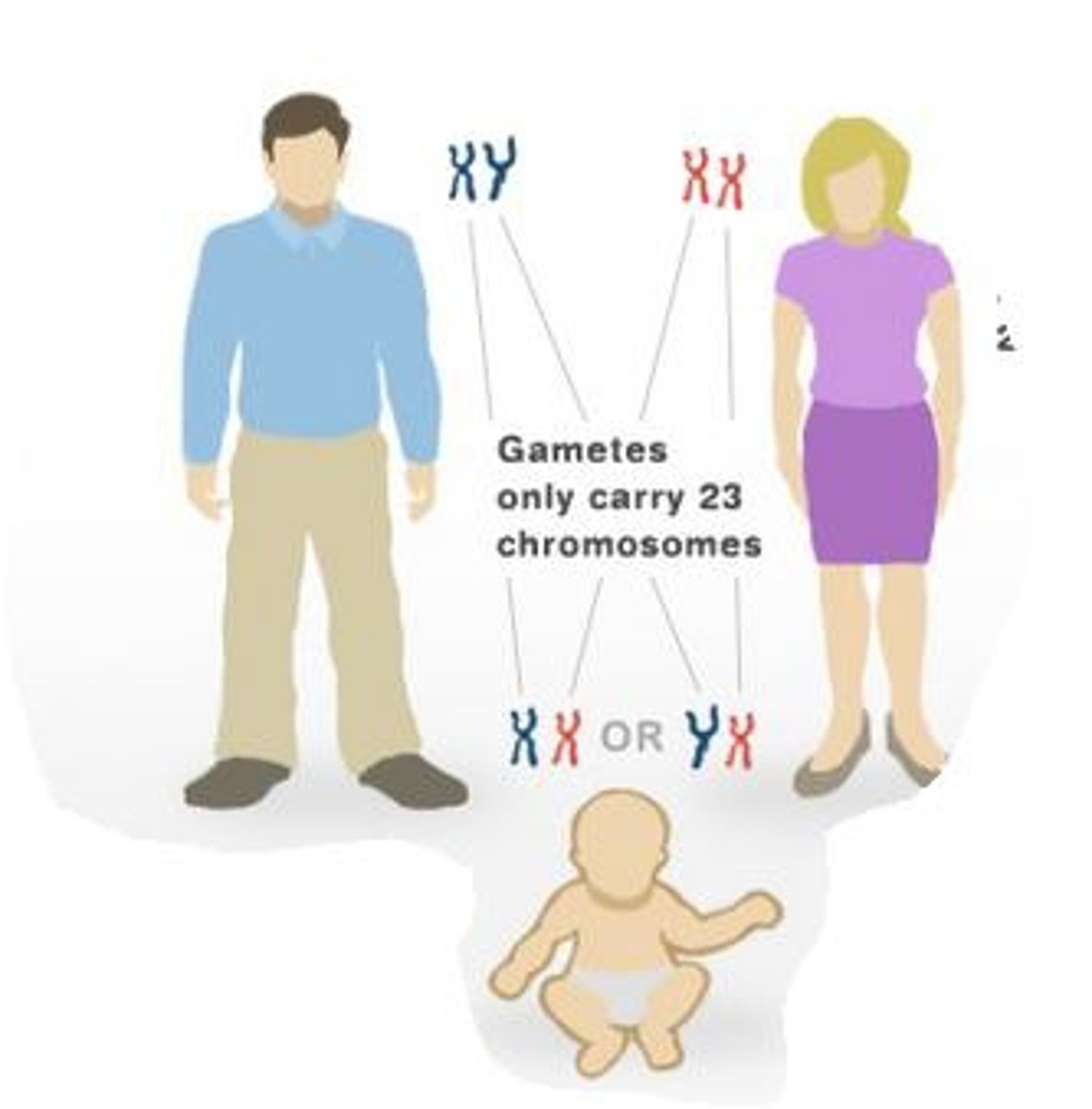
Gametes
ova or sperm (reproductive haploid cells)
Gametes carry how many chromosomes?
23
Human offspring receive how many chromosomes from the mother and how many from the father?
23 from the mother
23 from the father
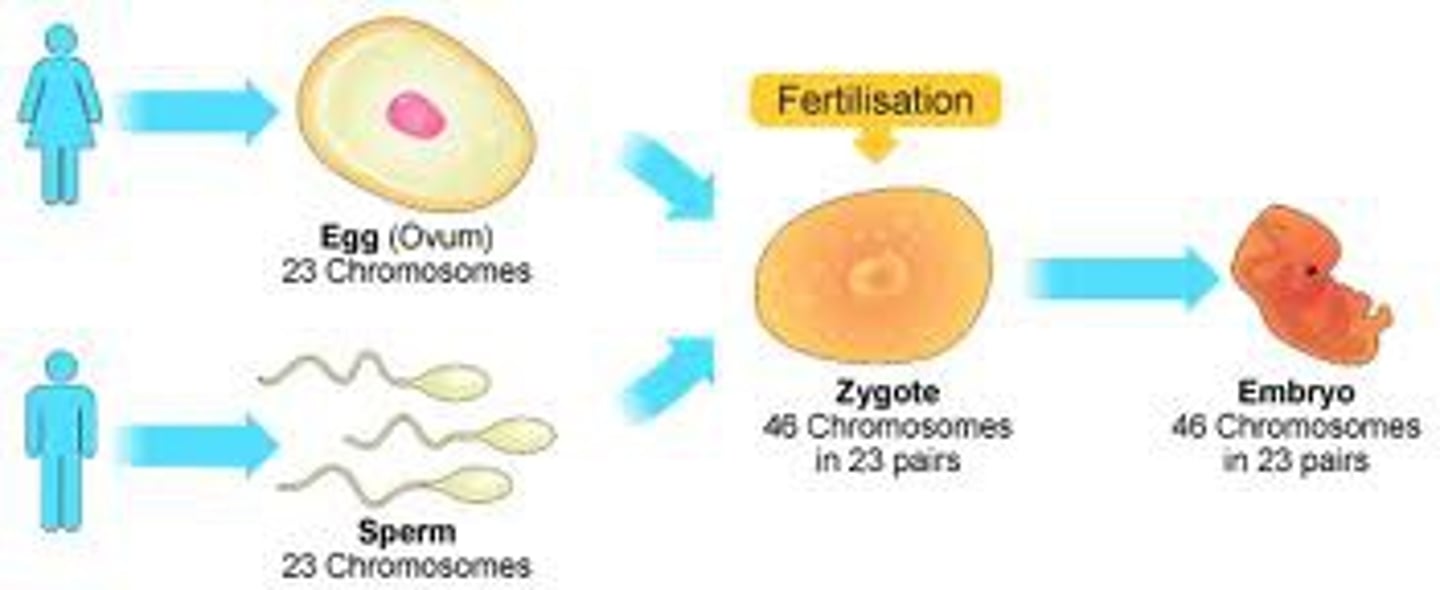
G_______________ are produced through meiosis.
Gametes
How many sperm does a male retain from meiosis?
4 retained
***Remember, 4 daughter cells are formed from meiosis.
How many eggs (ova) does a female retain from meiosis?
1 retained
3 others, called polar bodies, die off so that the 1 surviving egg receives the proper nutrients, ribosomes, mitochondria,and enzymes for growth after fertilization.
***Remember, 4 daughter cells are formed from meiosis, but only 1 survives, and 3 die off.
What is the difference between a diploid and a haploid cell?
A diploid cell contains twice the number of chromosomes as the haploid cell.
If an organism's diploid number is 40, what is its haploid number?
20 haploid
If an organism's haploid number is 30, what is its diploid number?
60 diploid
Why is it necessary for a gamete to be haploid?
Because the offspring will receive 1/2 of its chromosomes from the father and 1/2 from the mother, 23 from each, equalling 46 chromosomes the offspring will receive.
Haploid sperm cell (23 chromosomes) + haploid egg cell (23 chromosomes) = diploid cell (46 chromosomes)